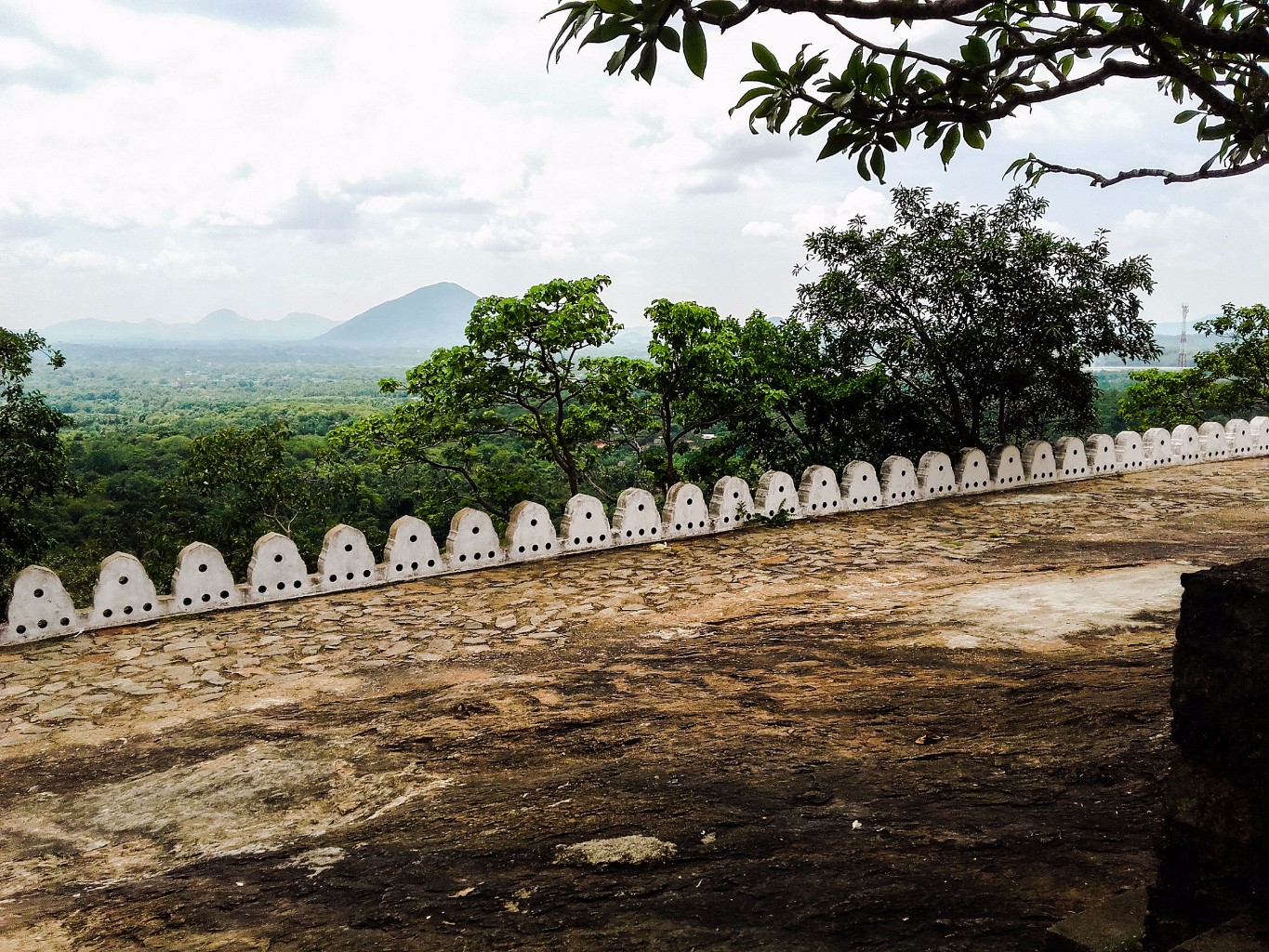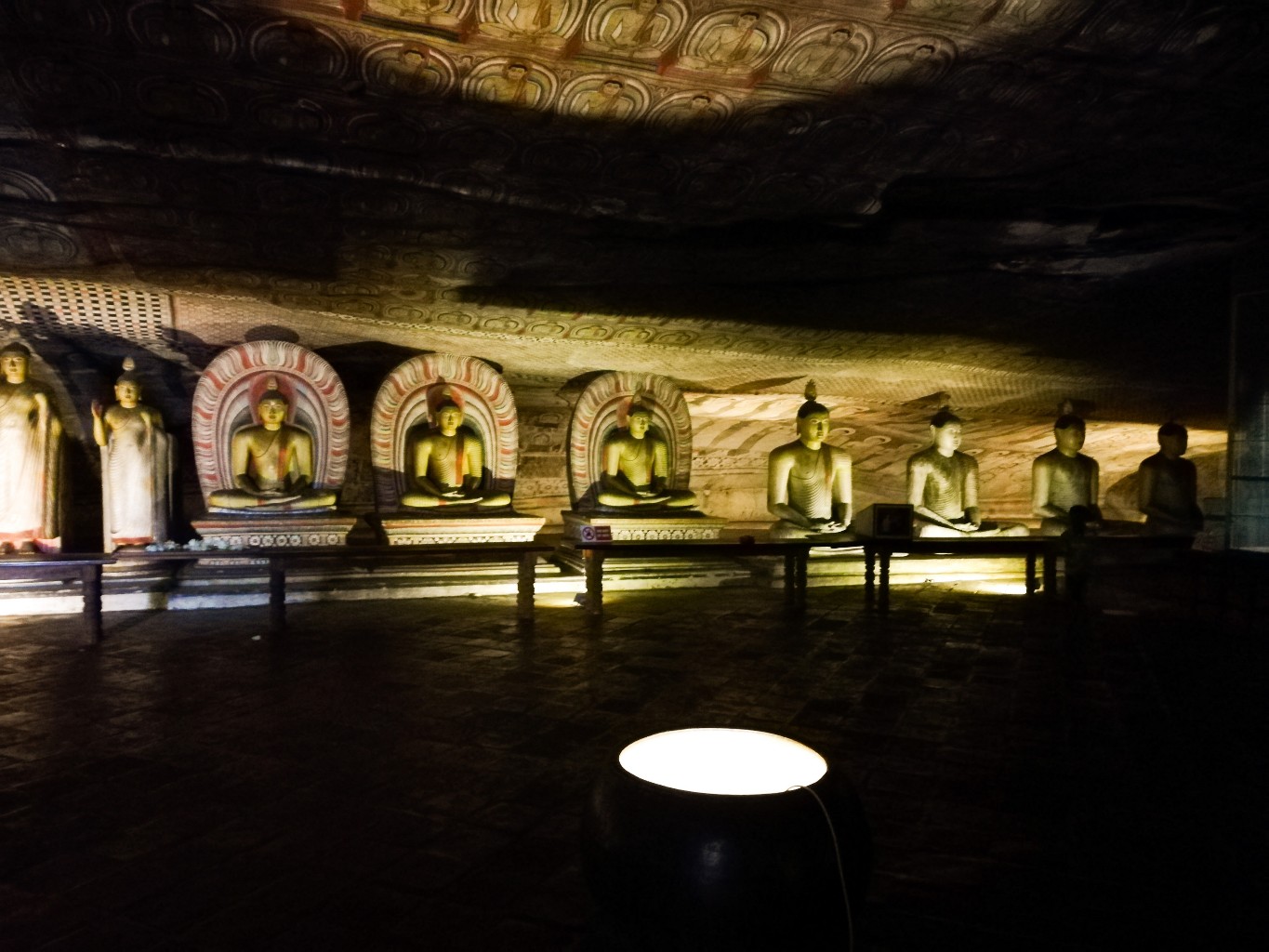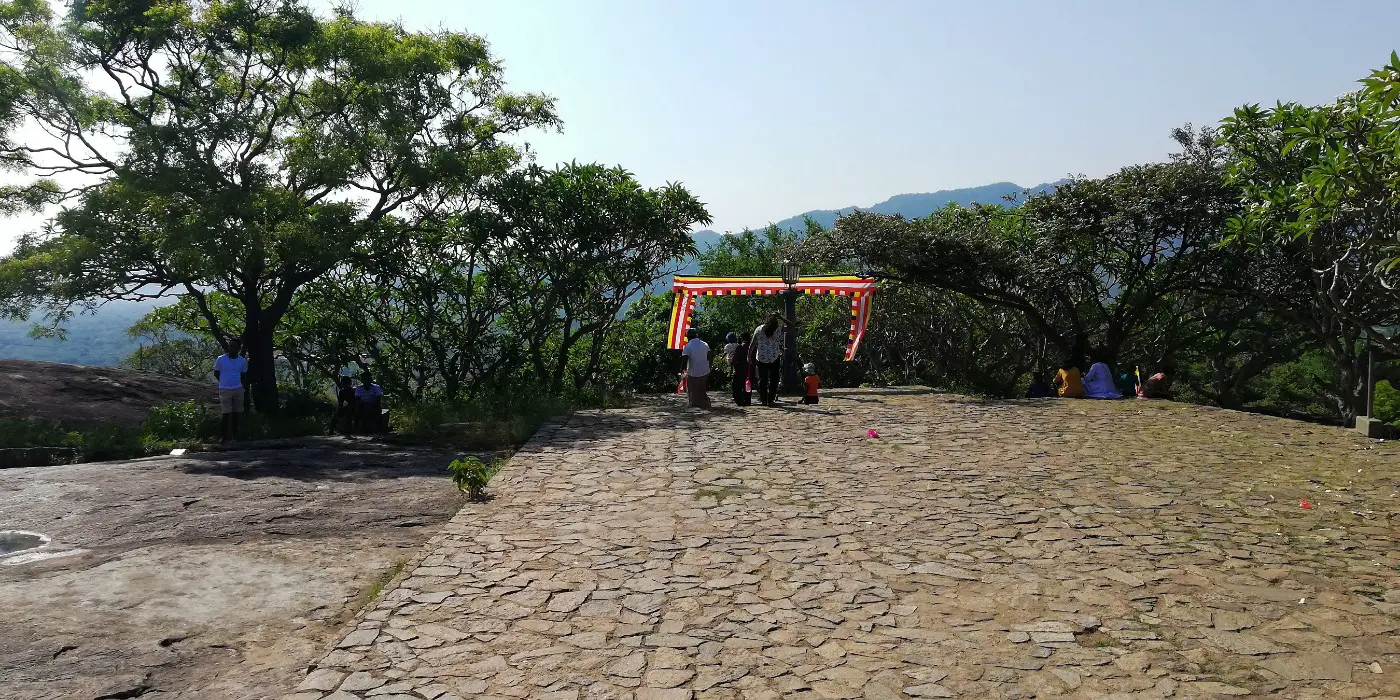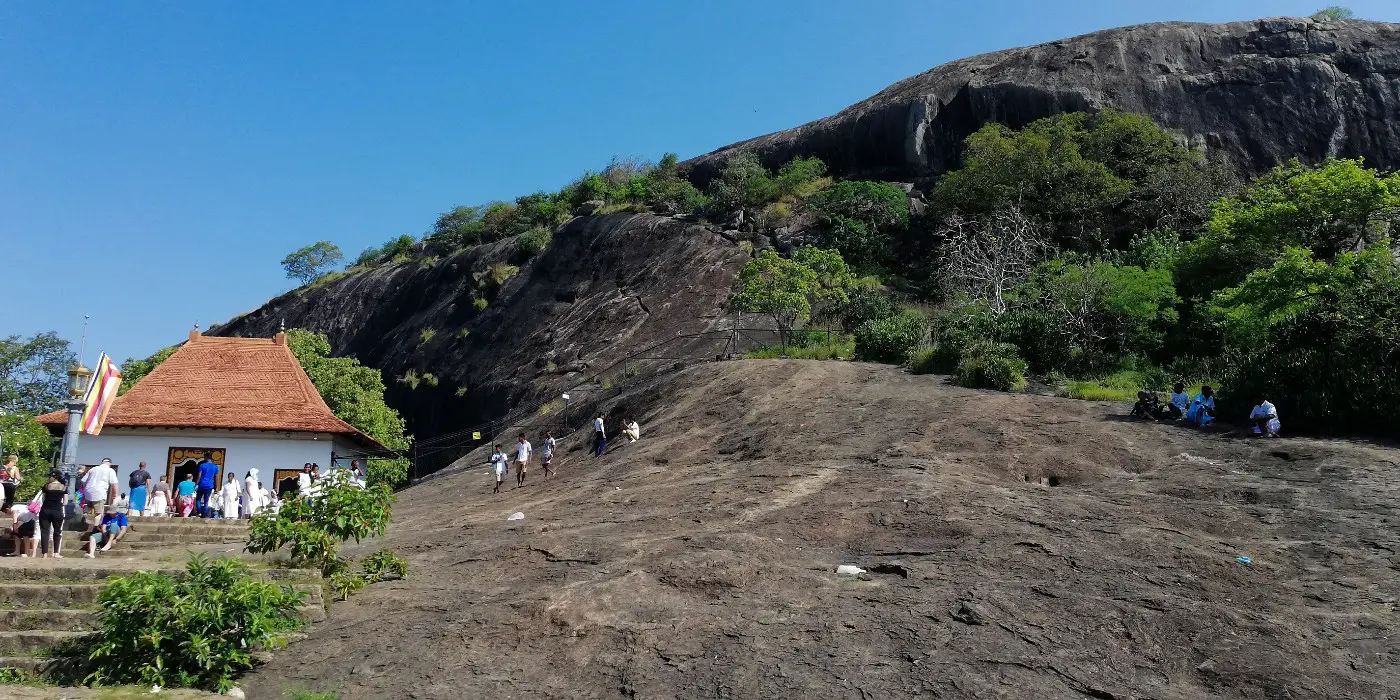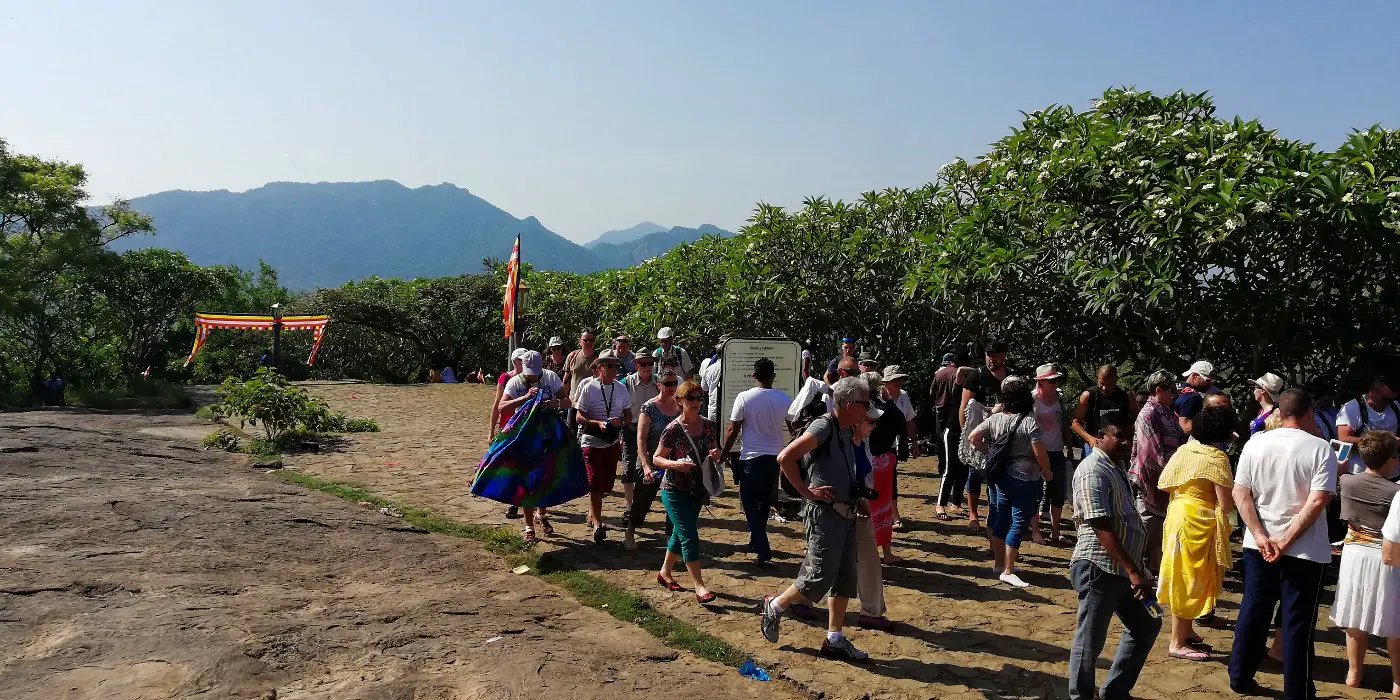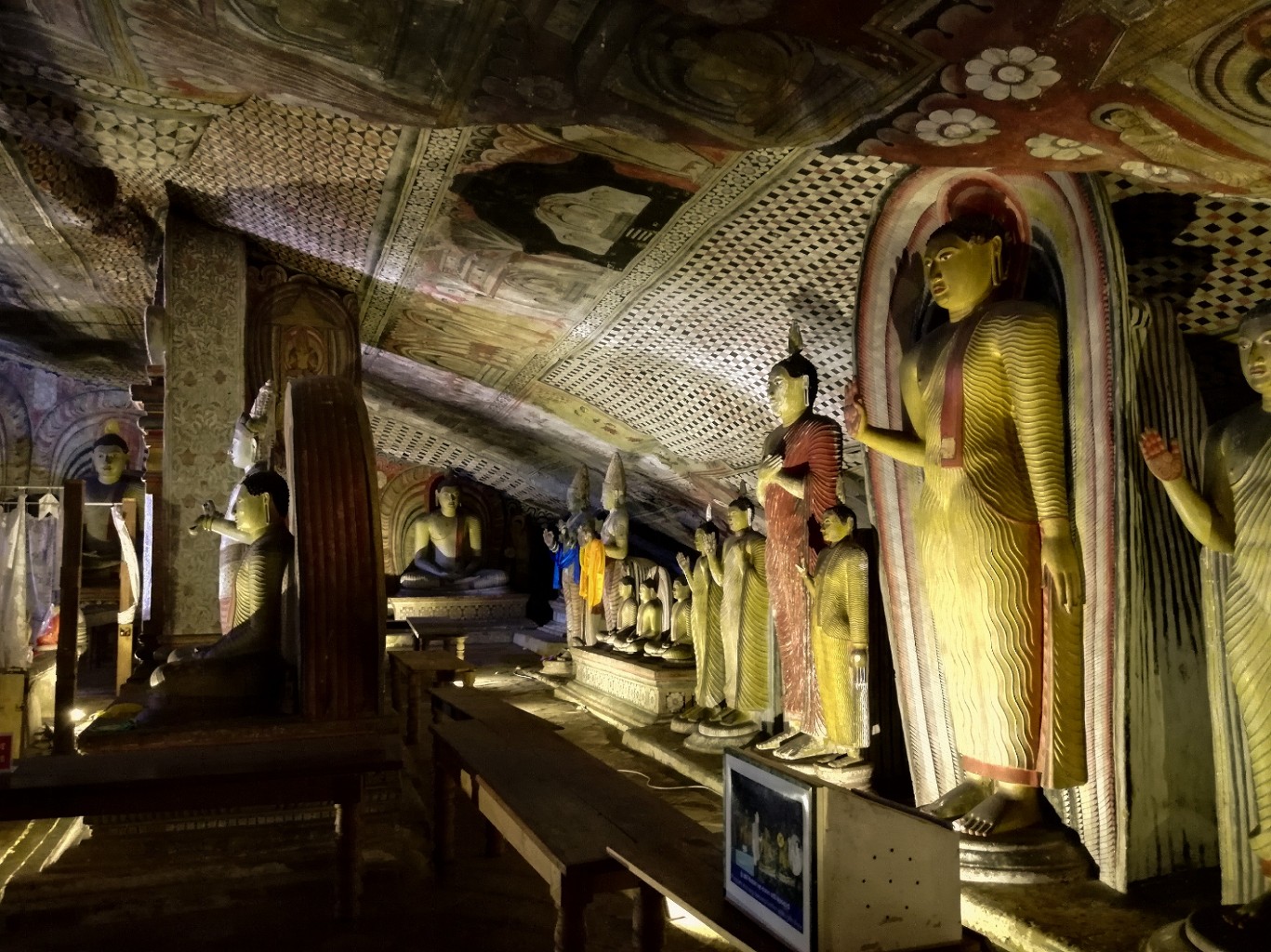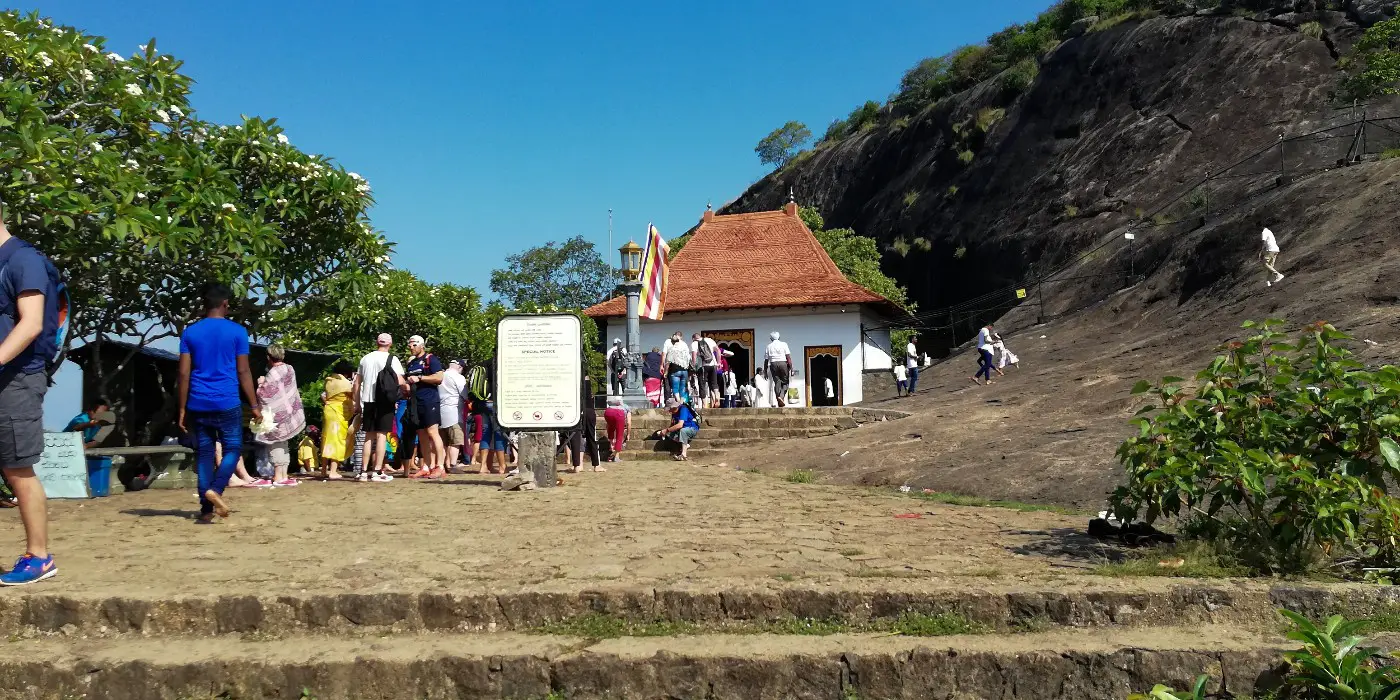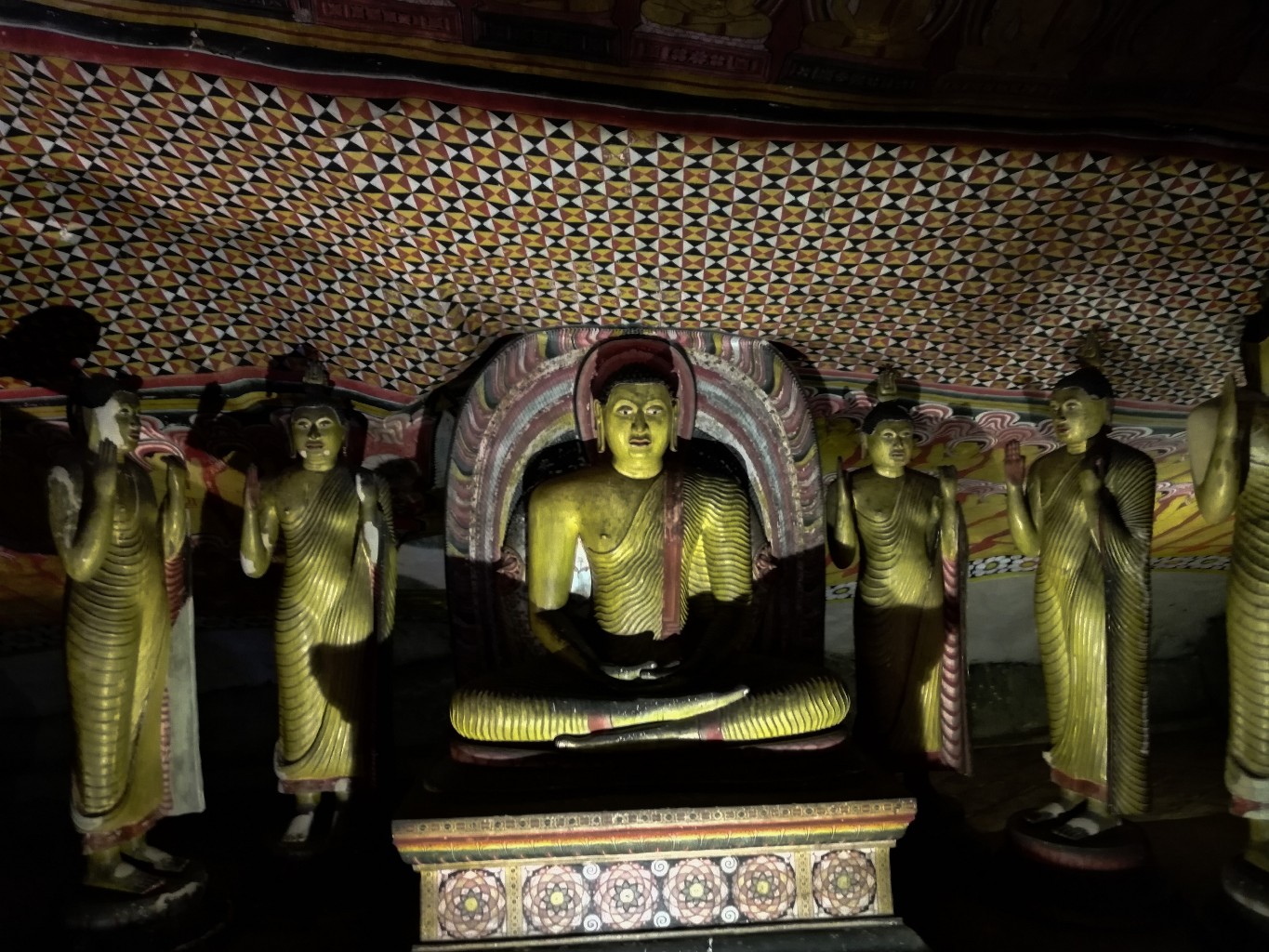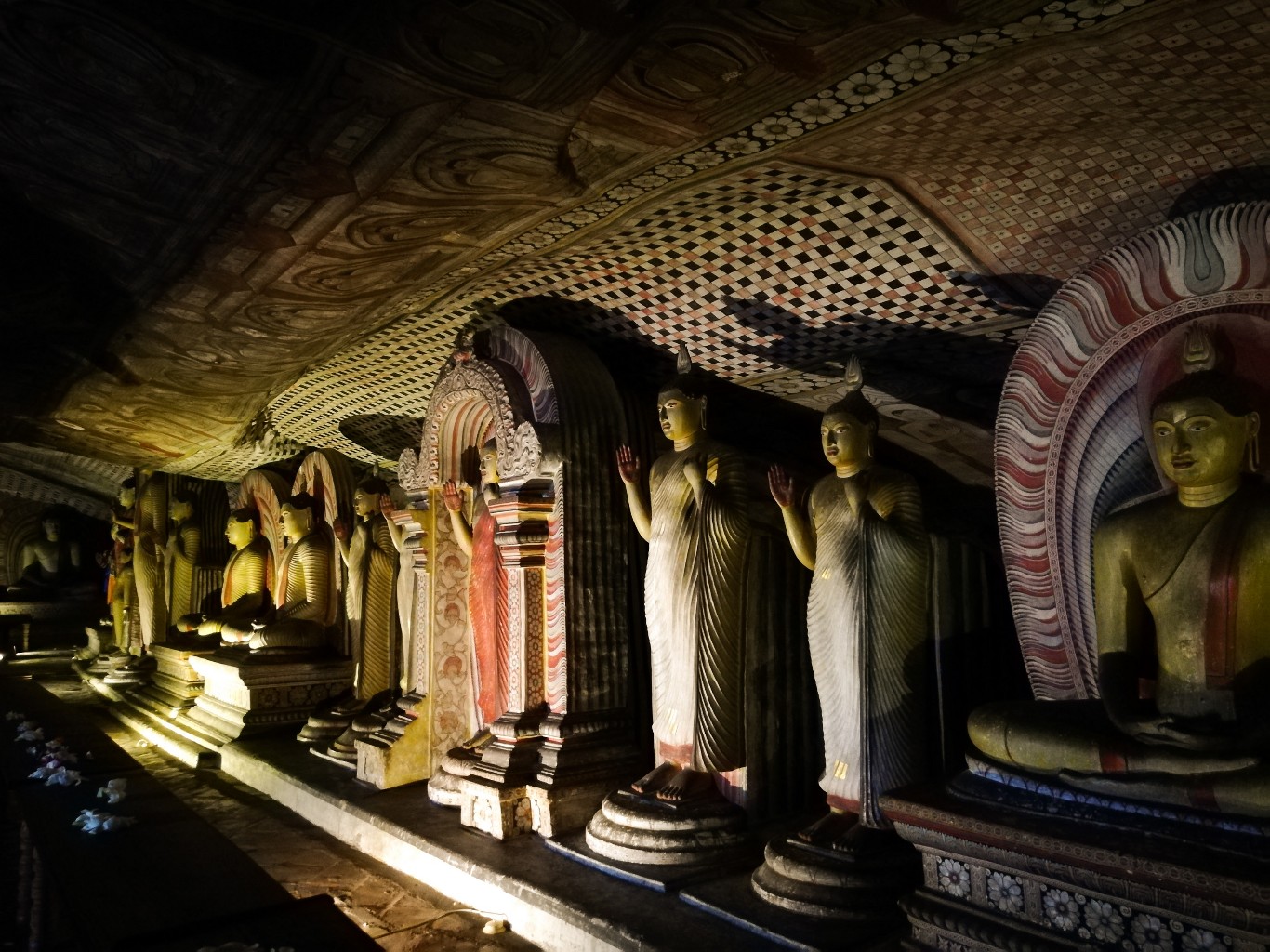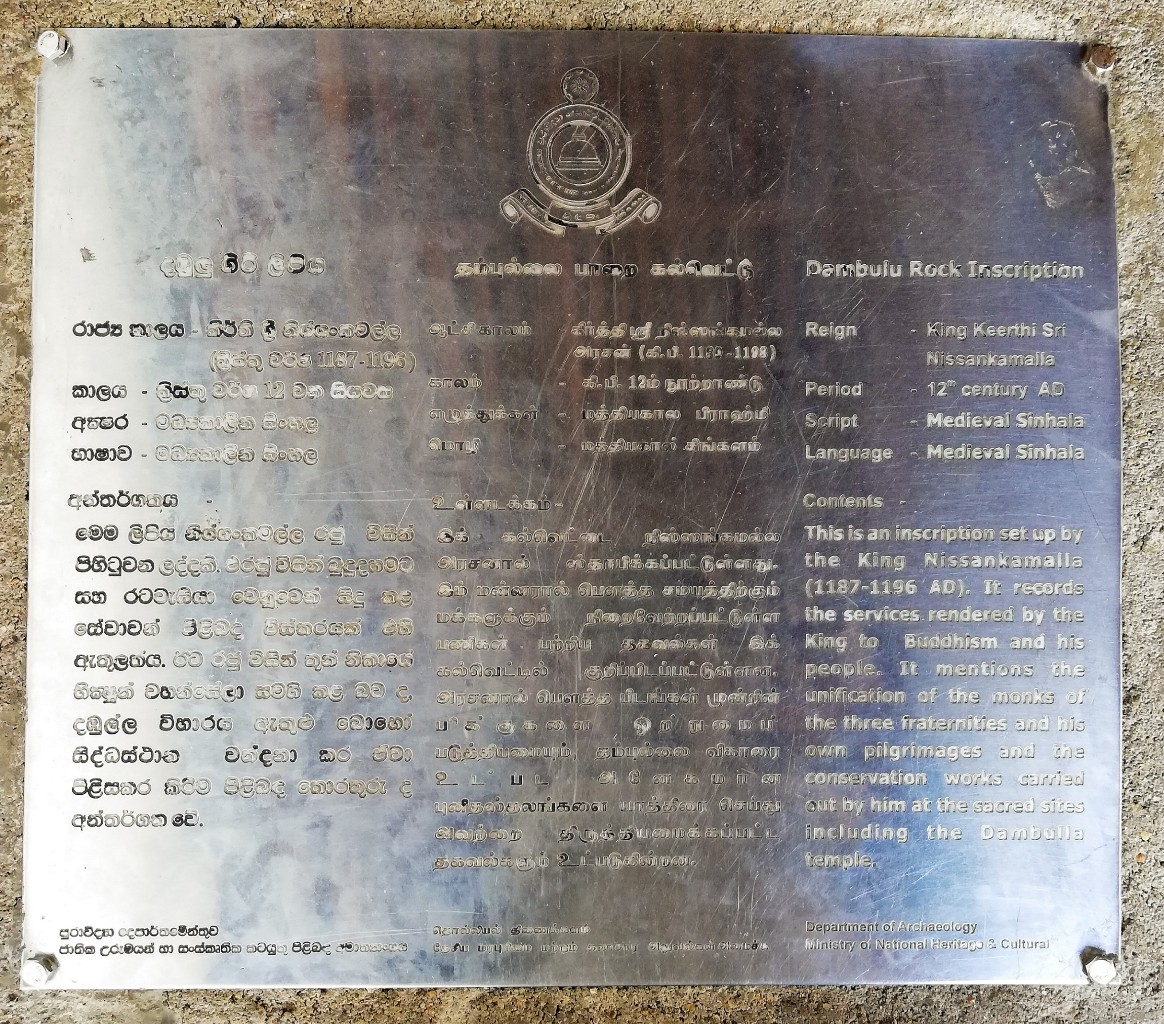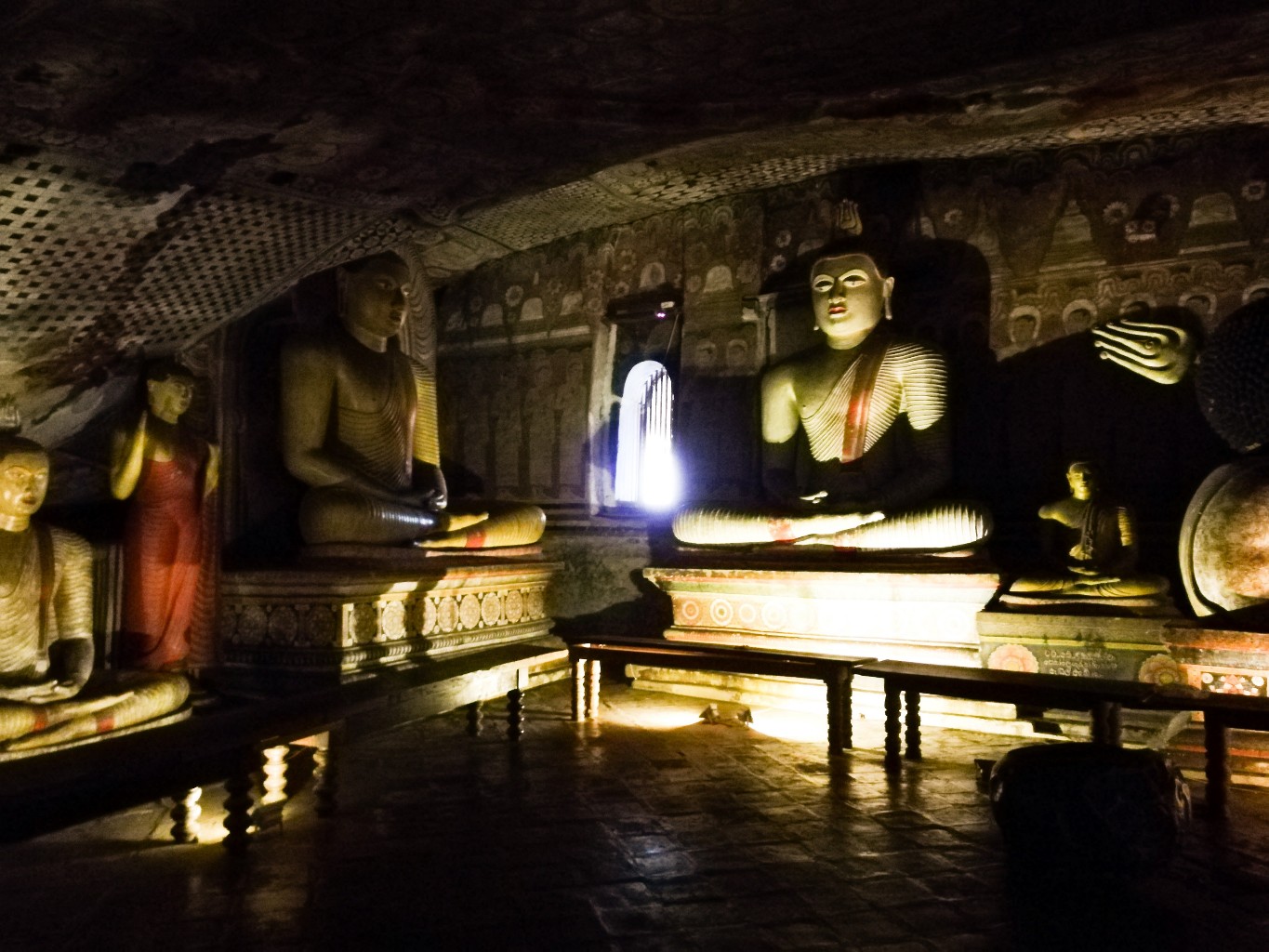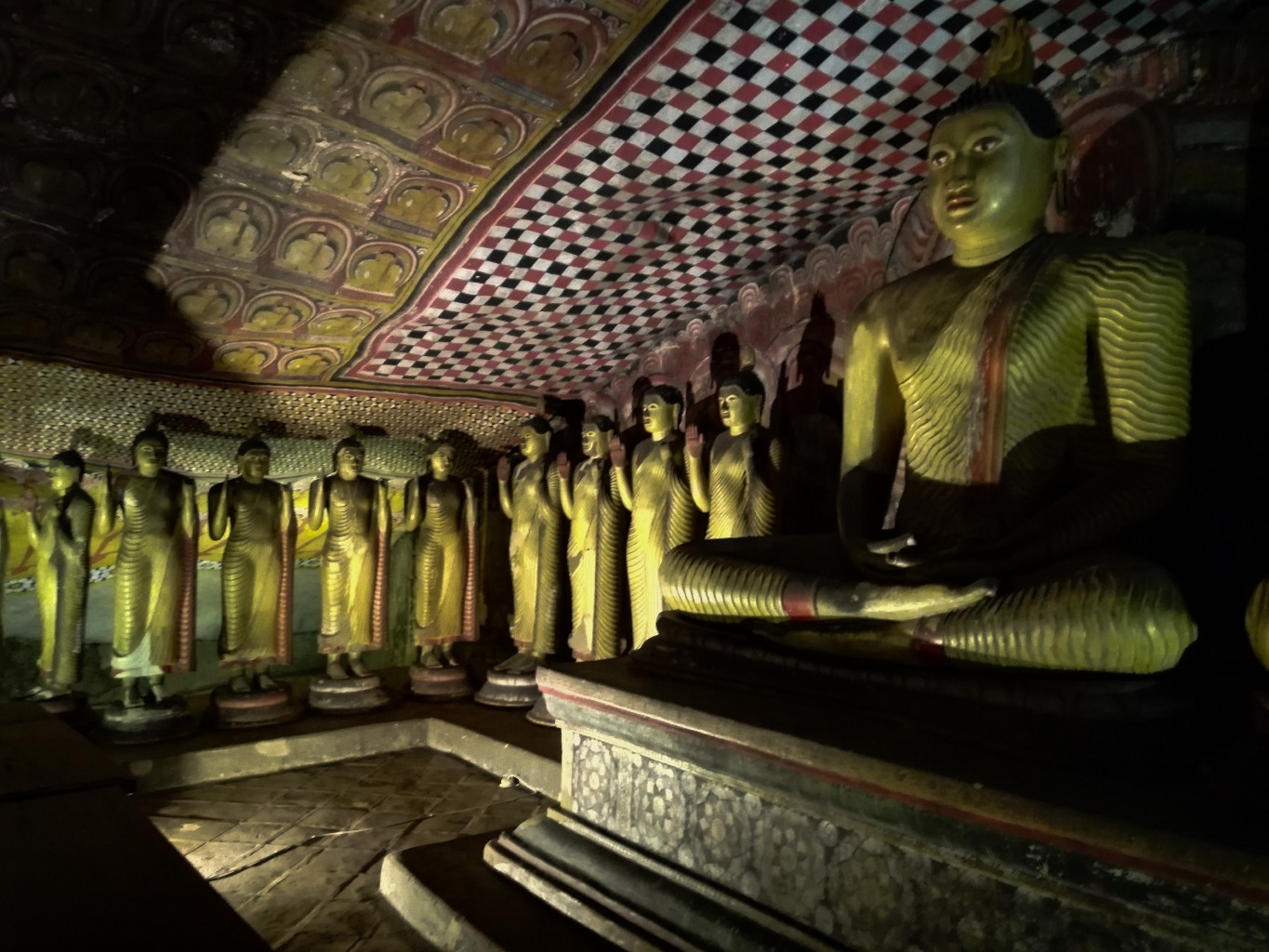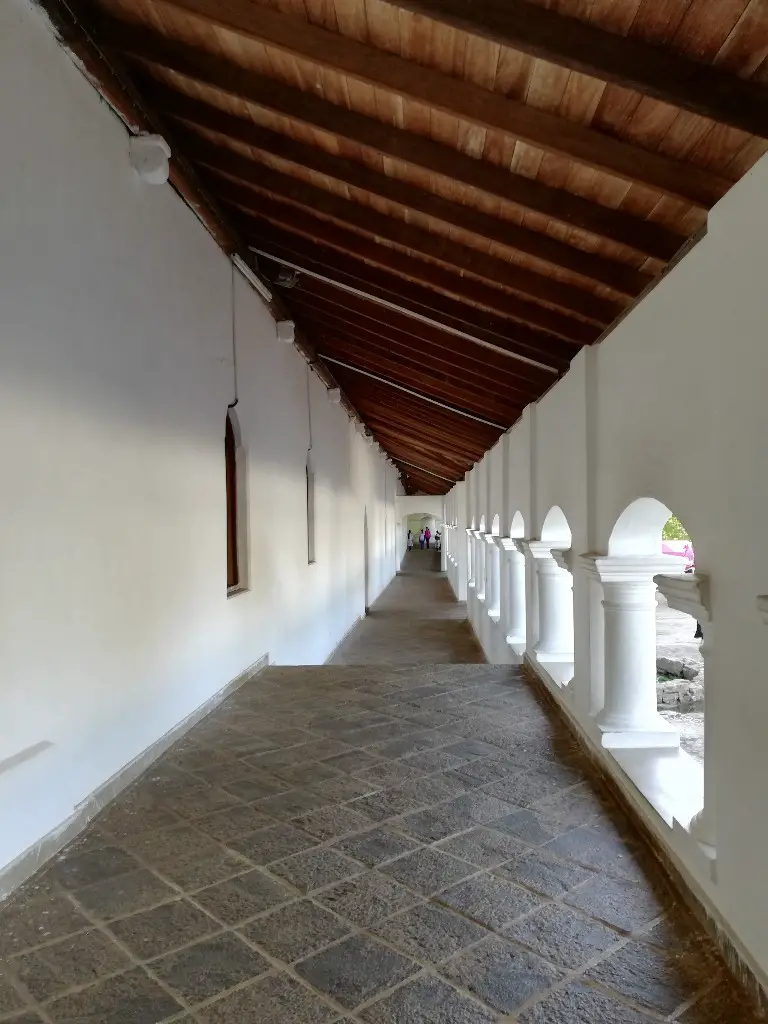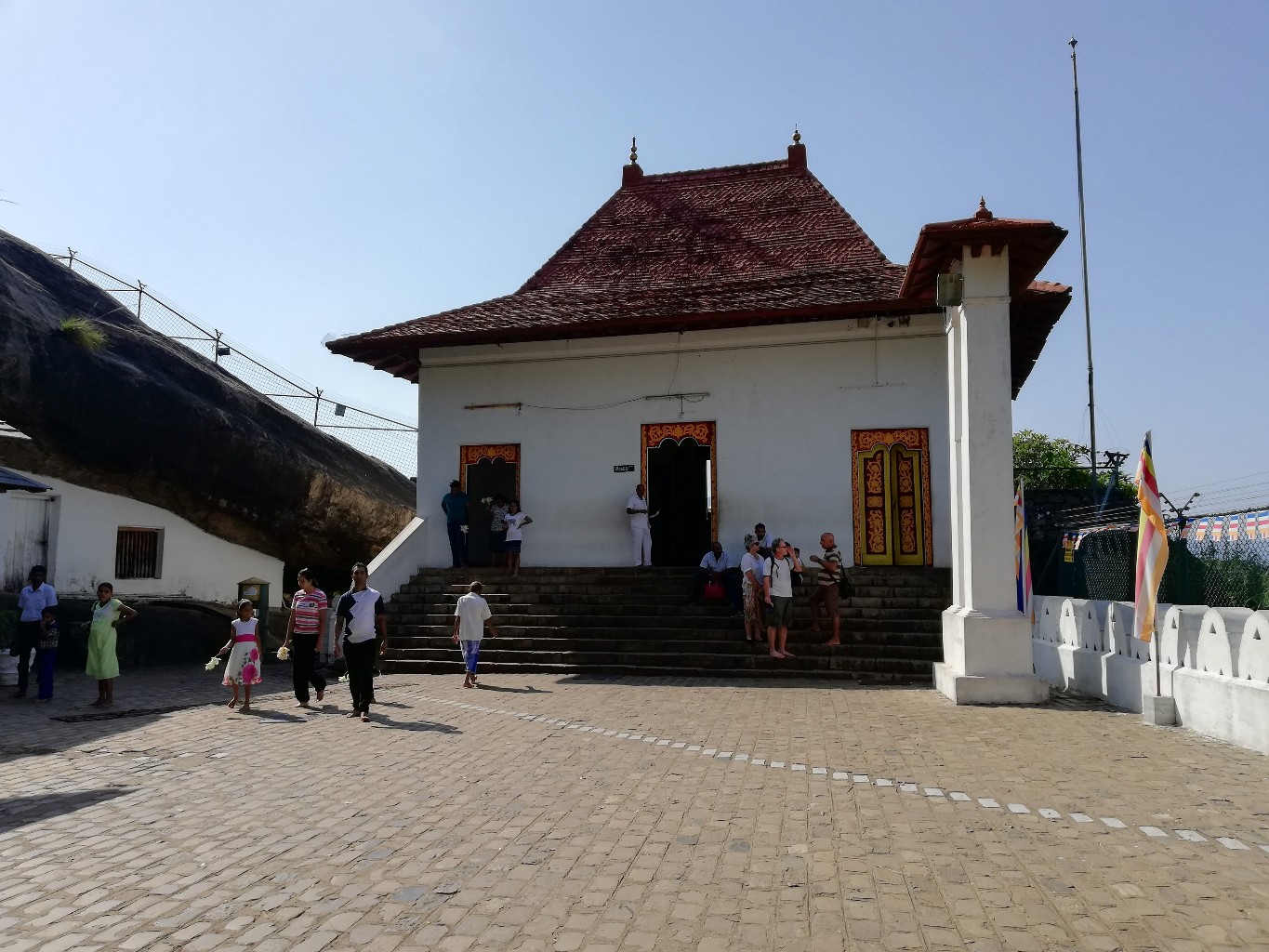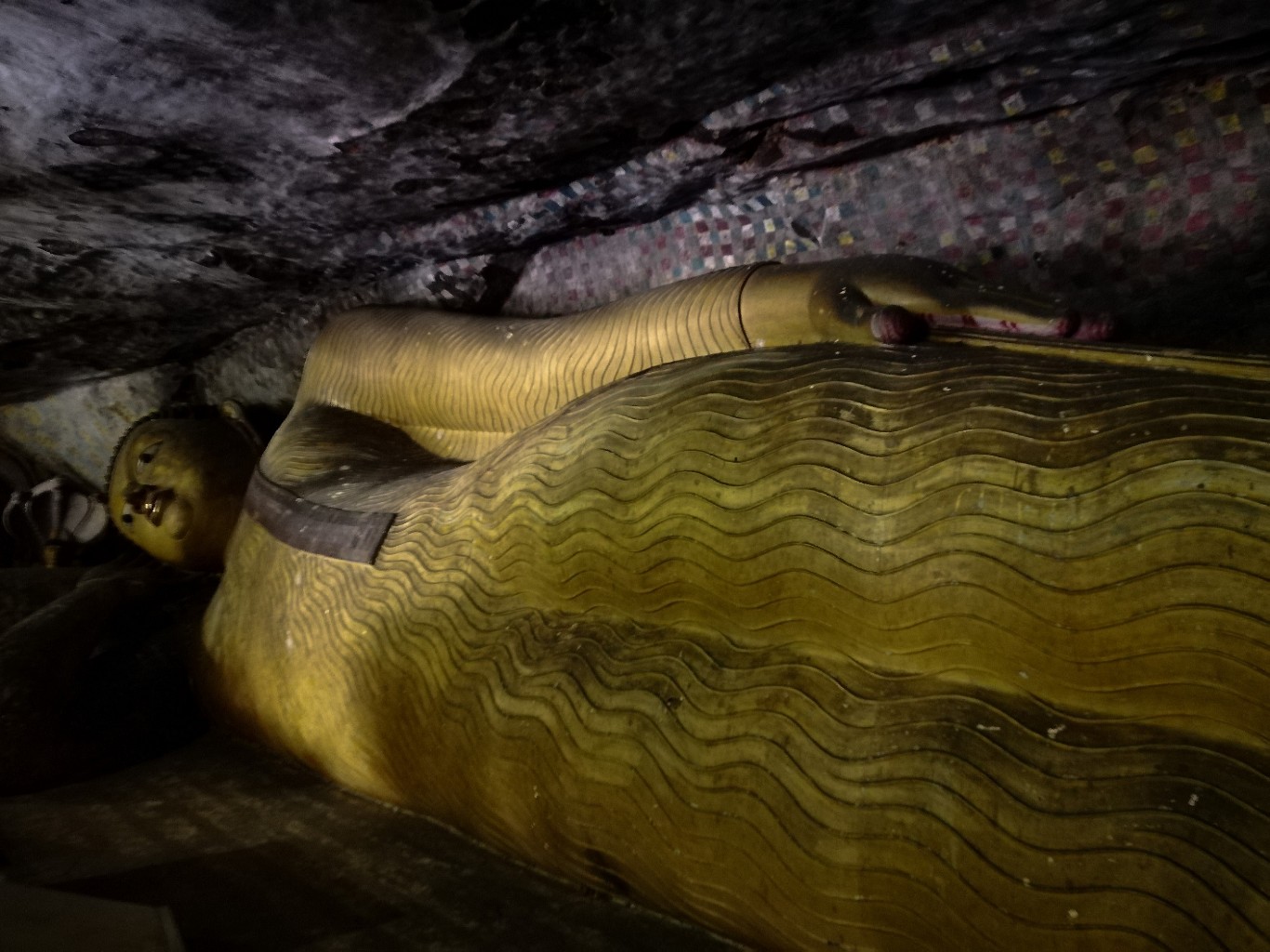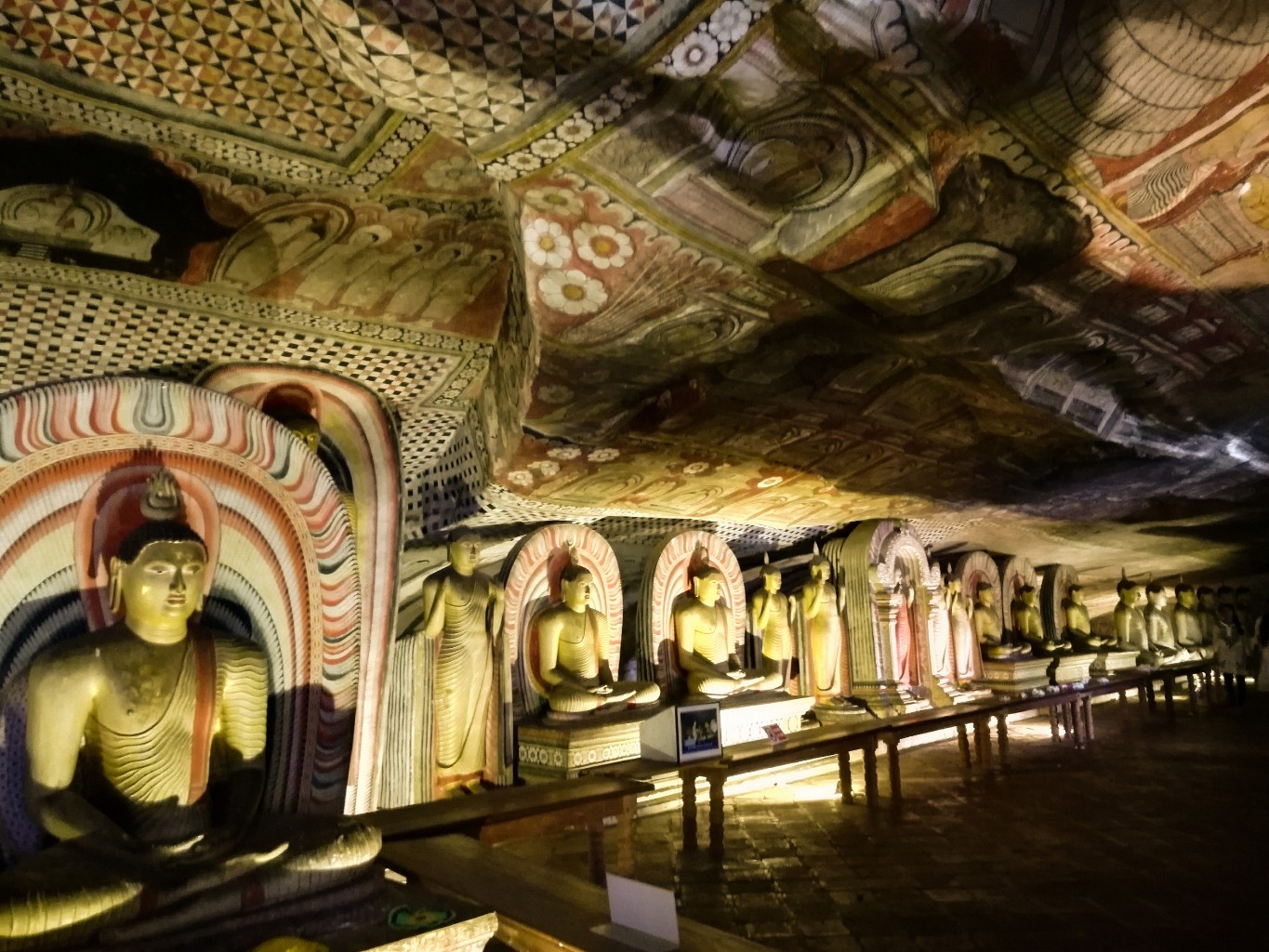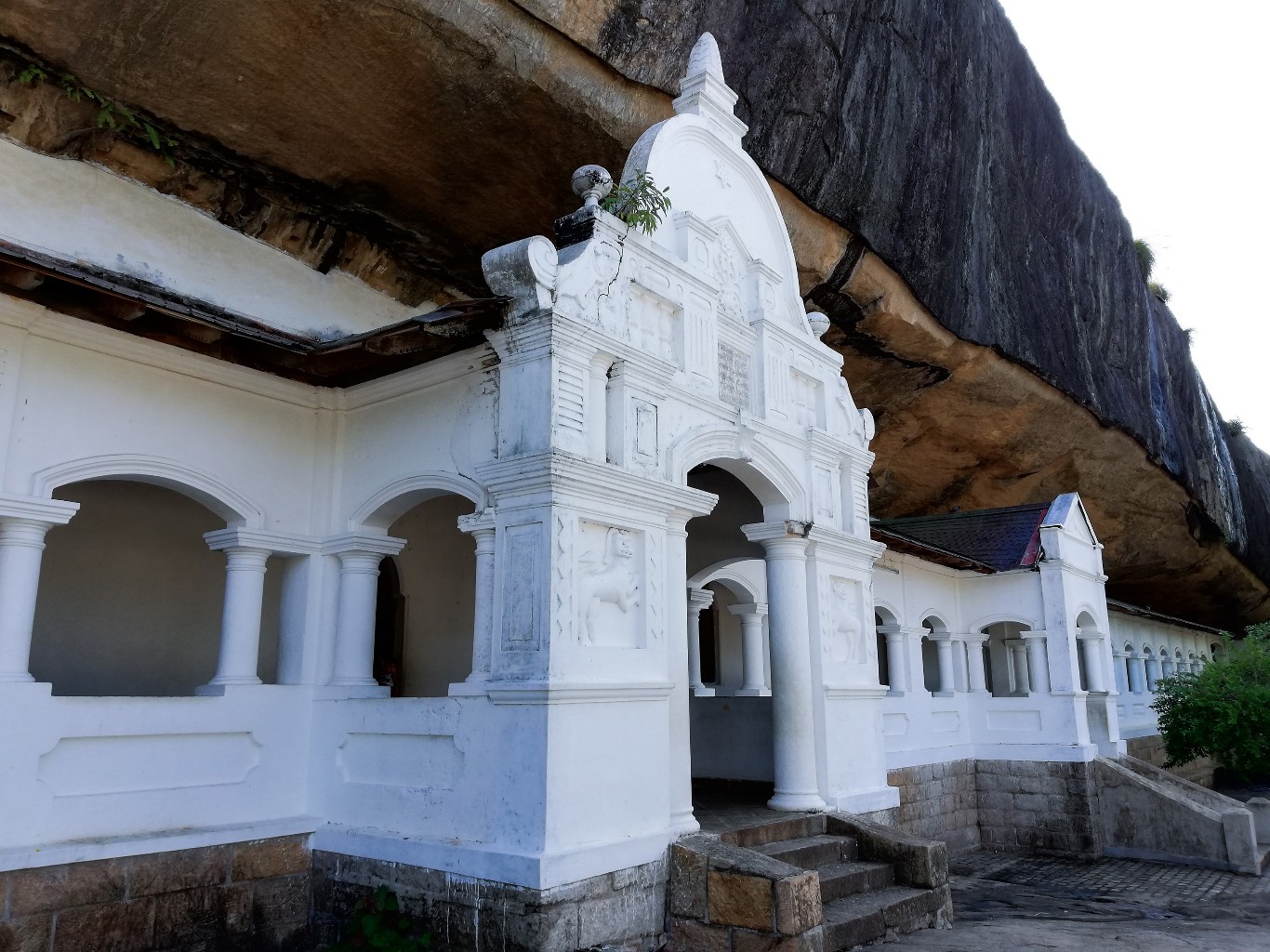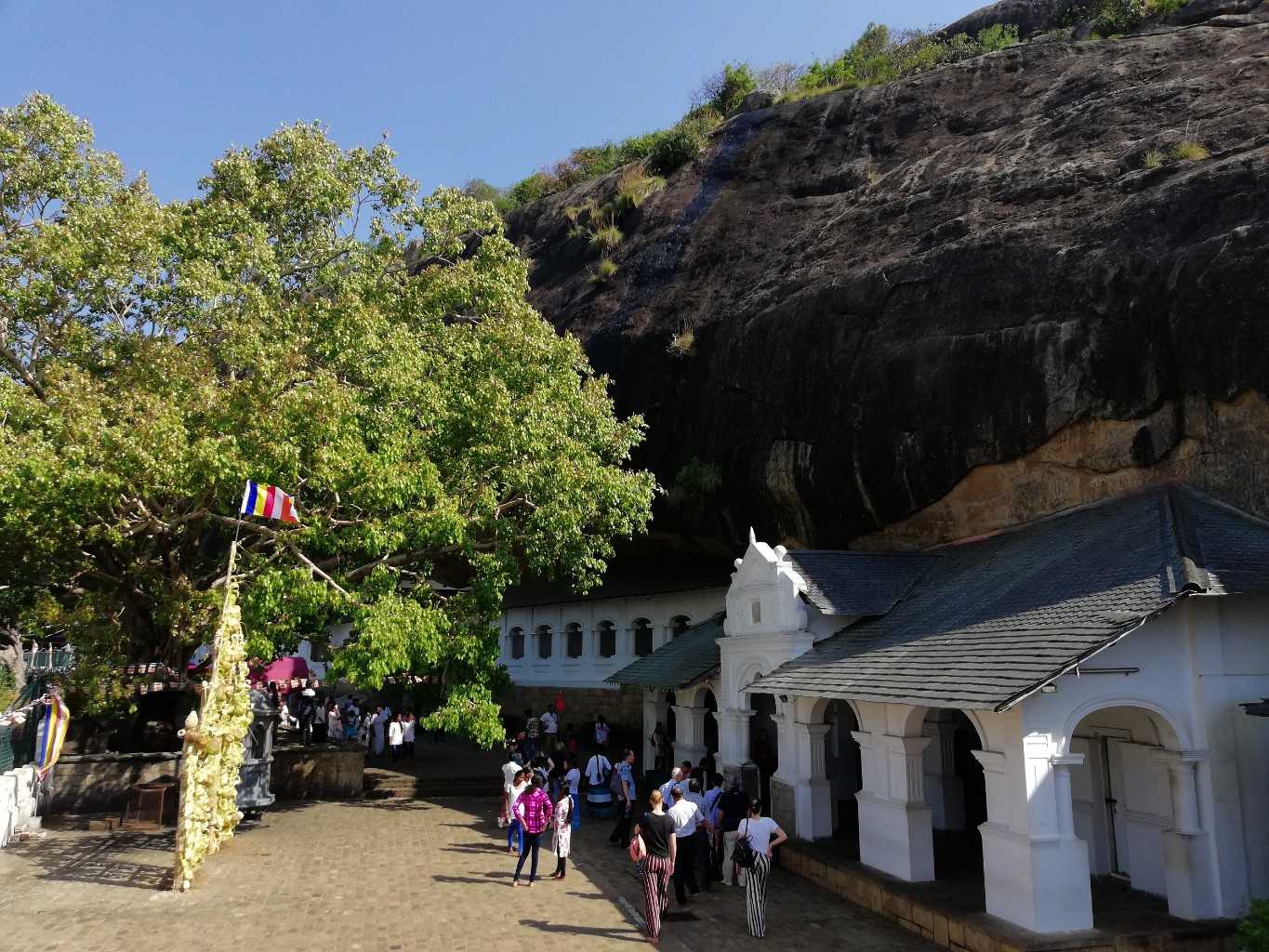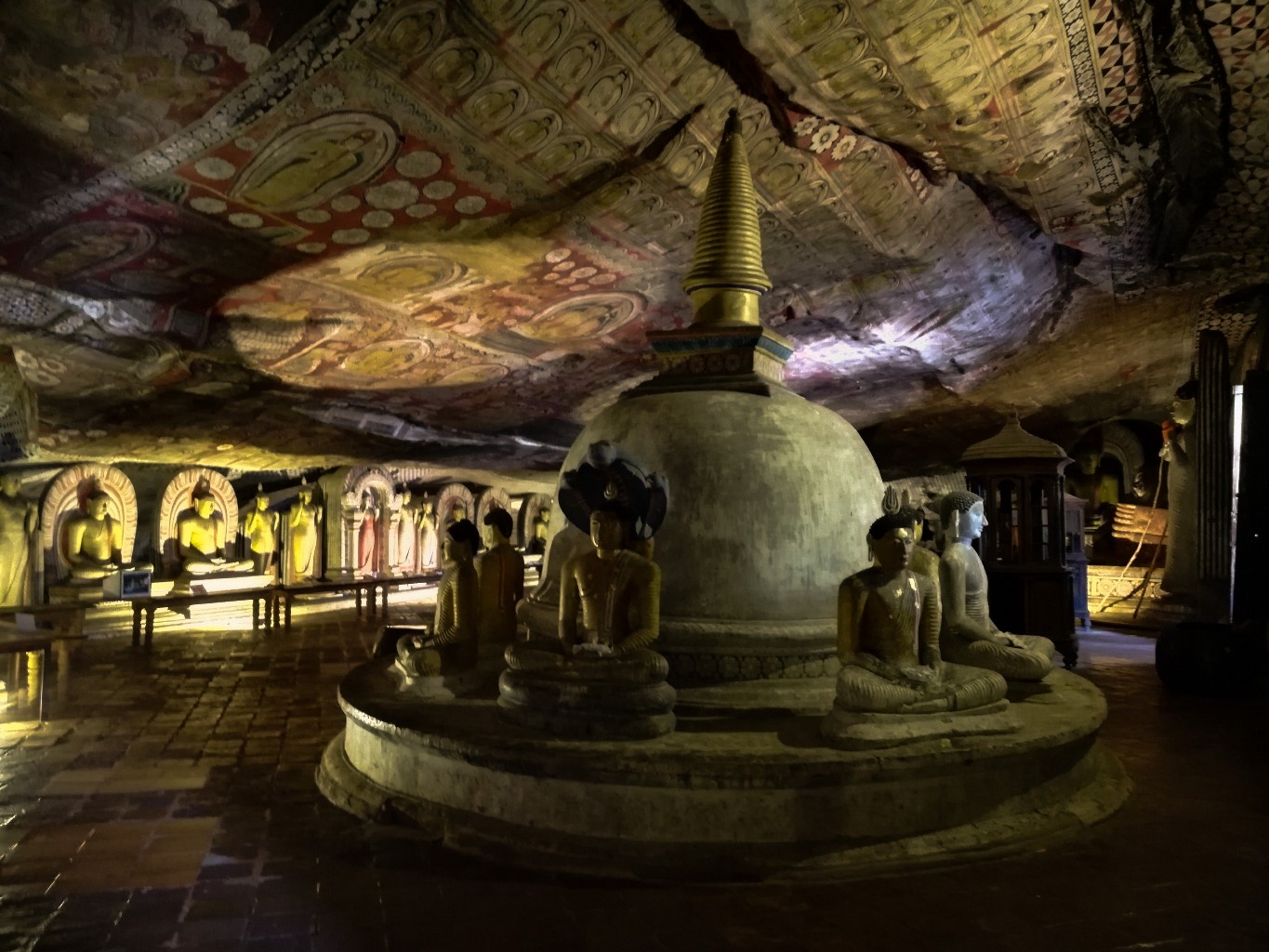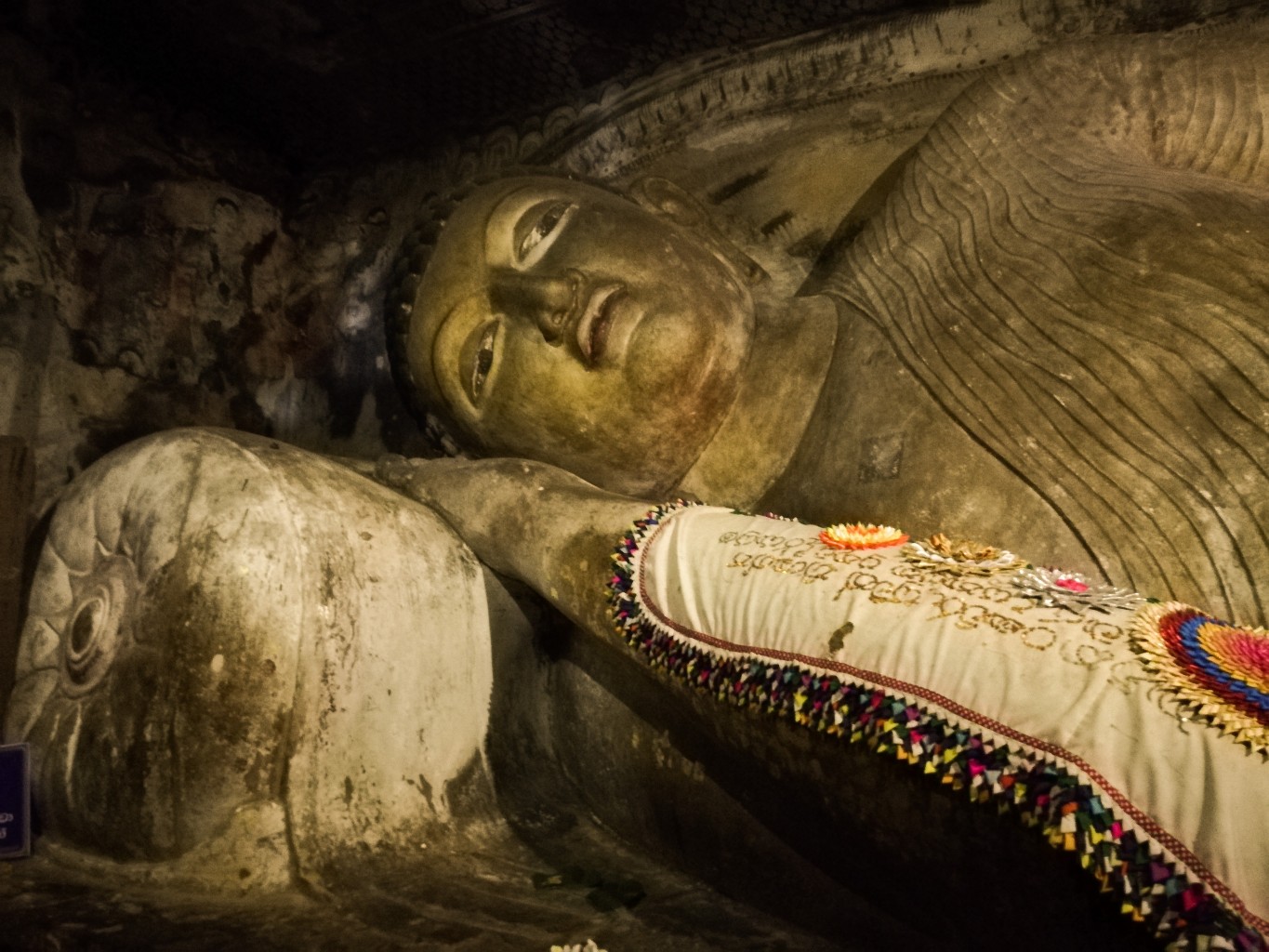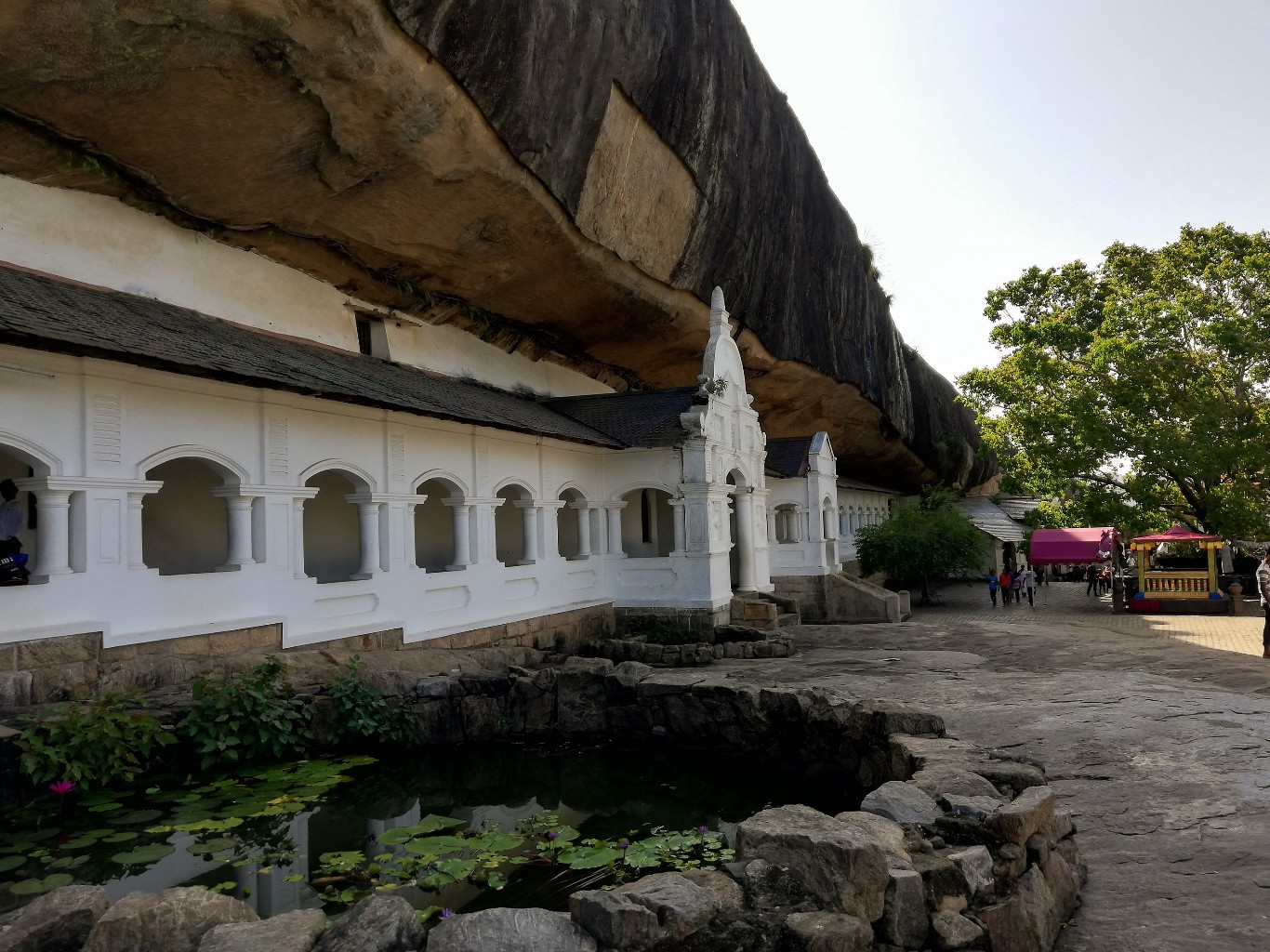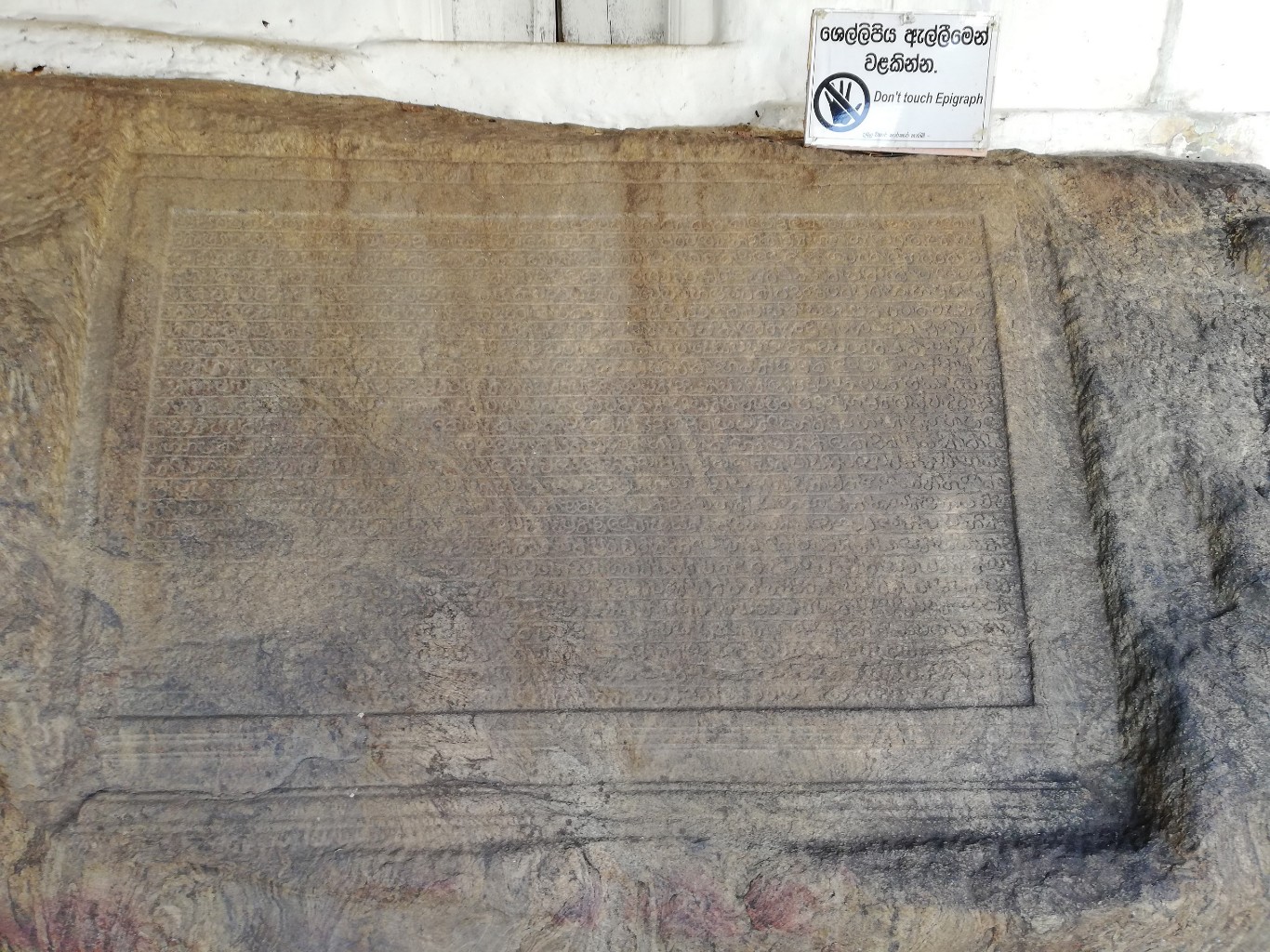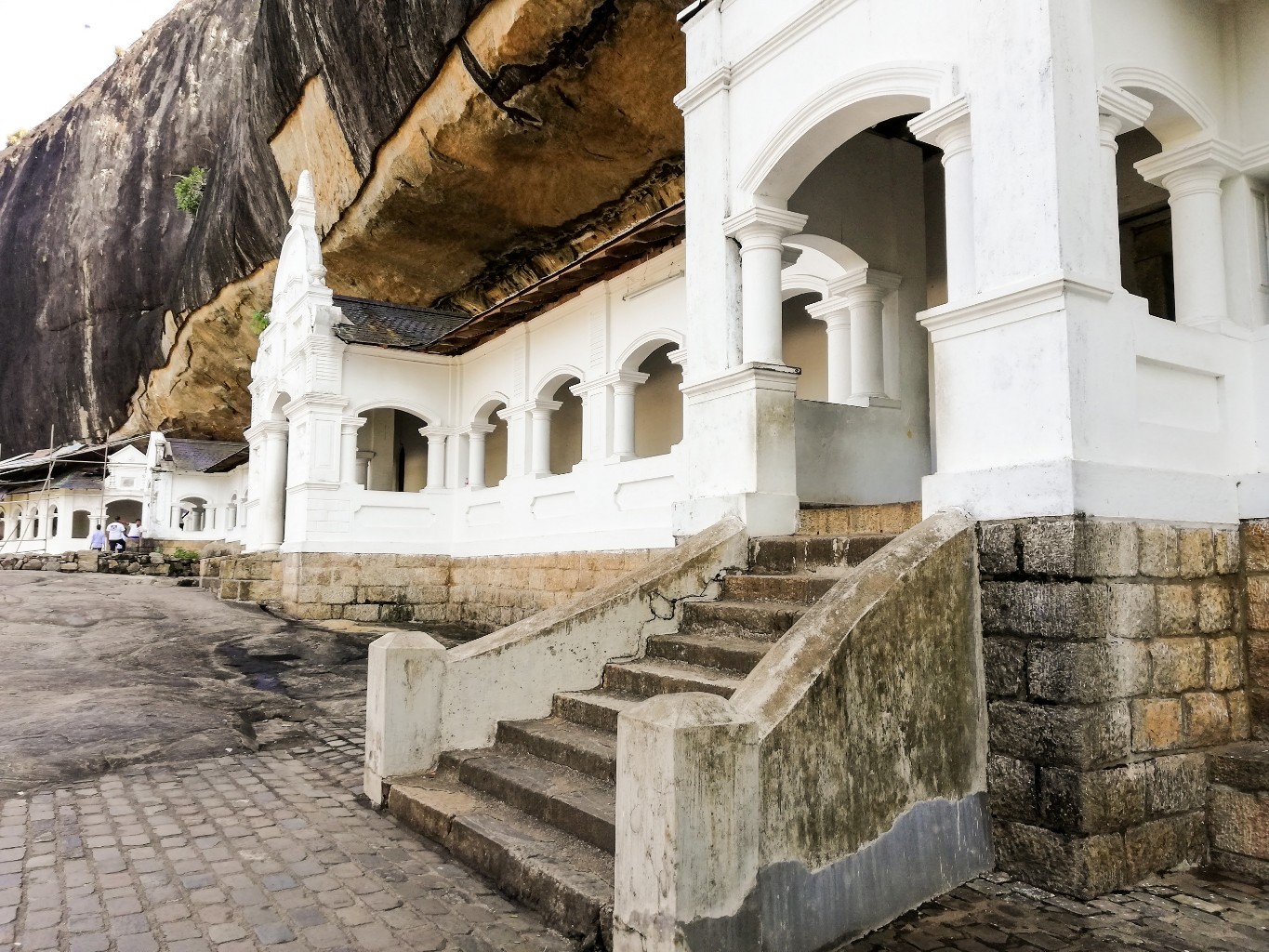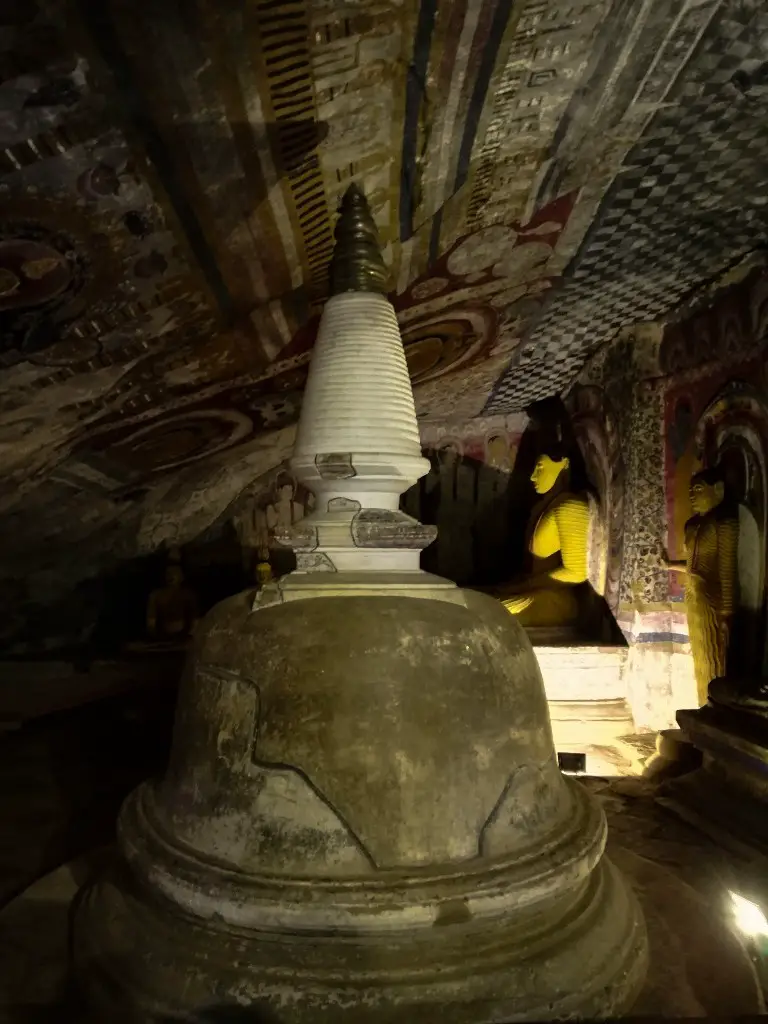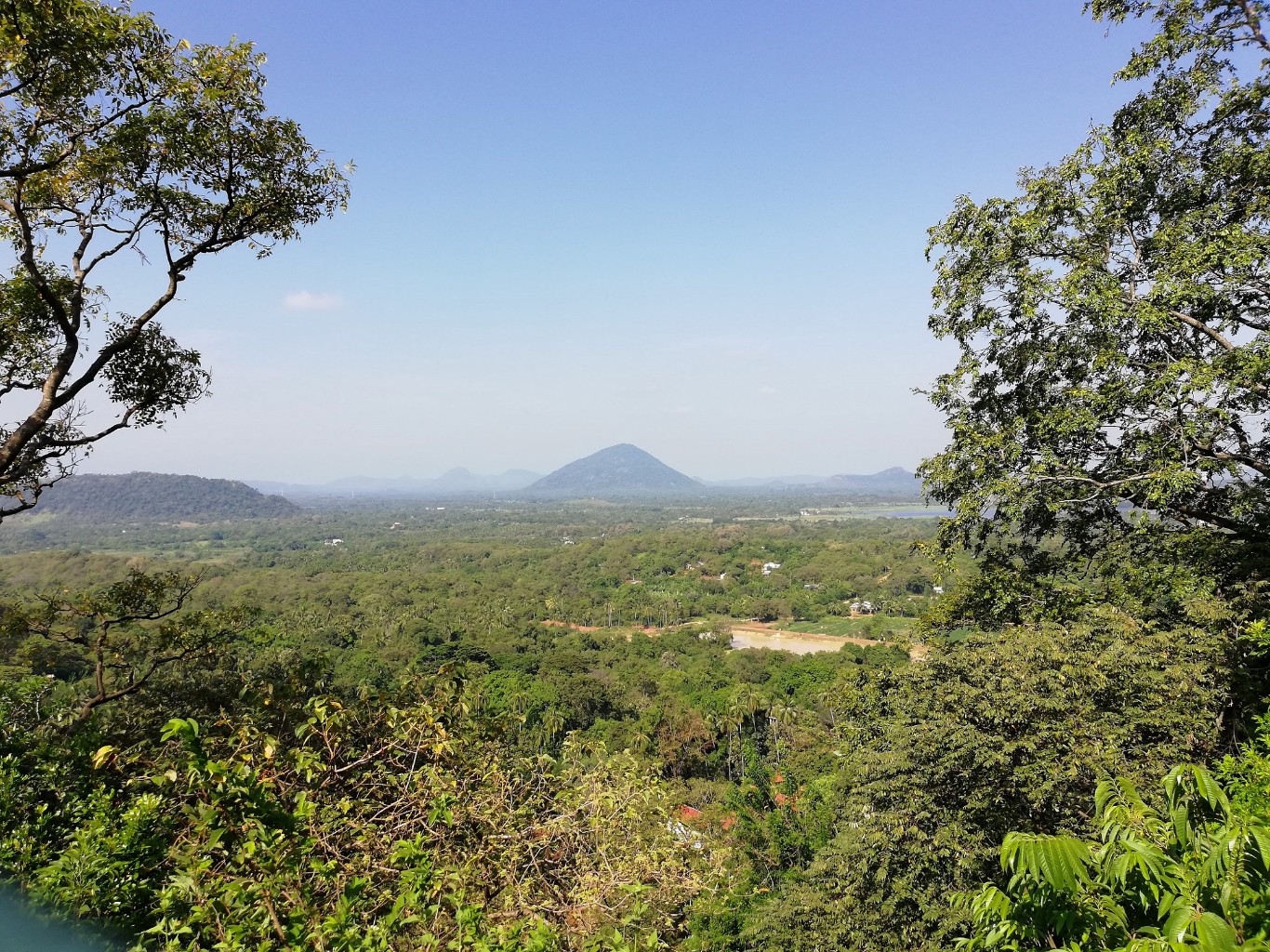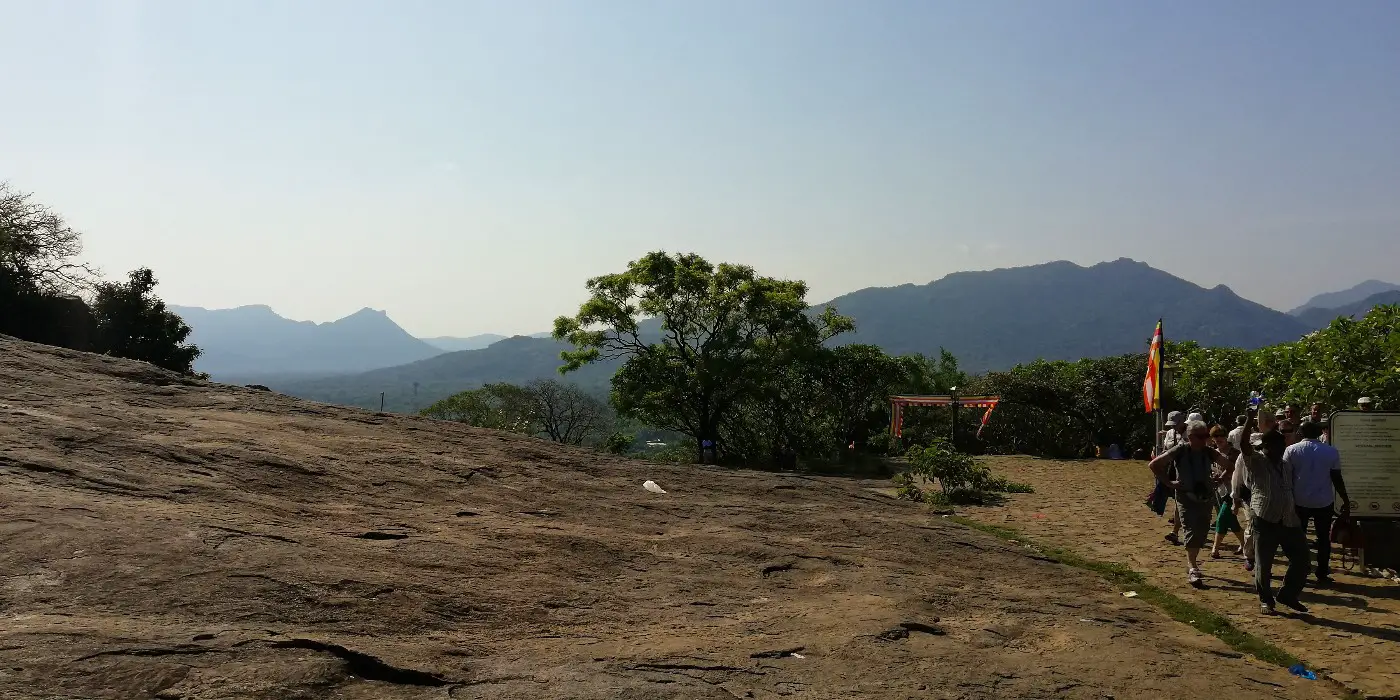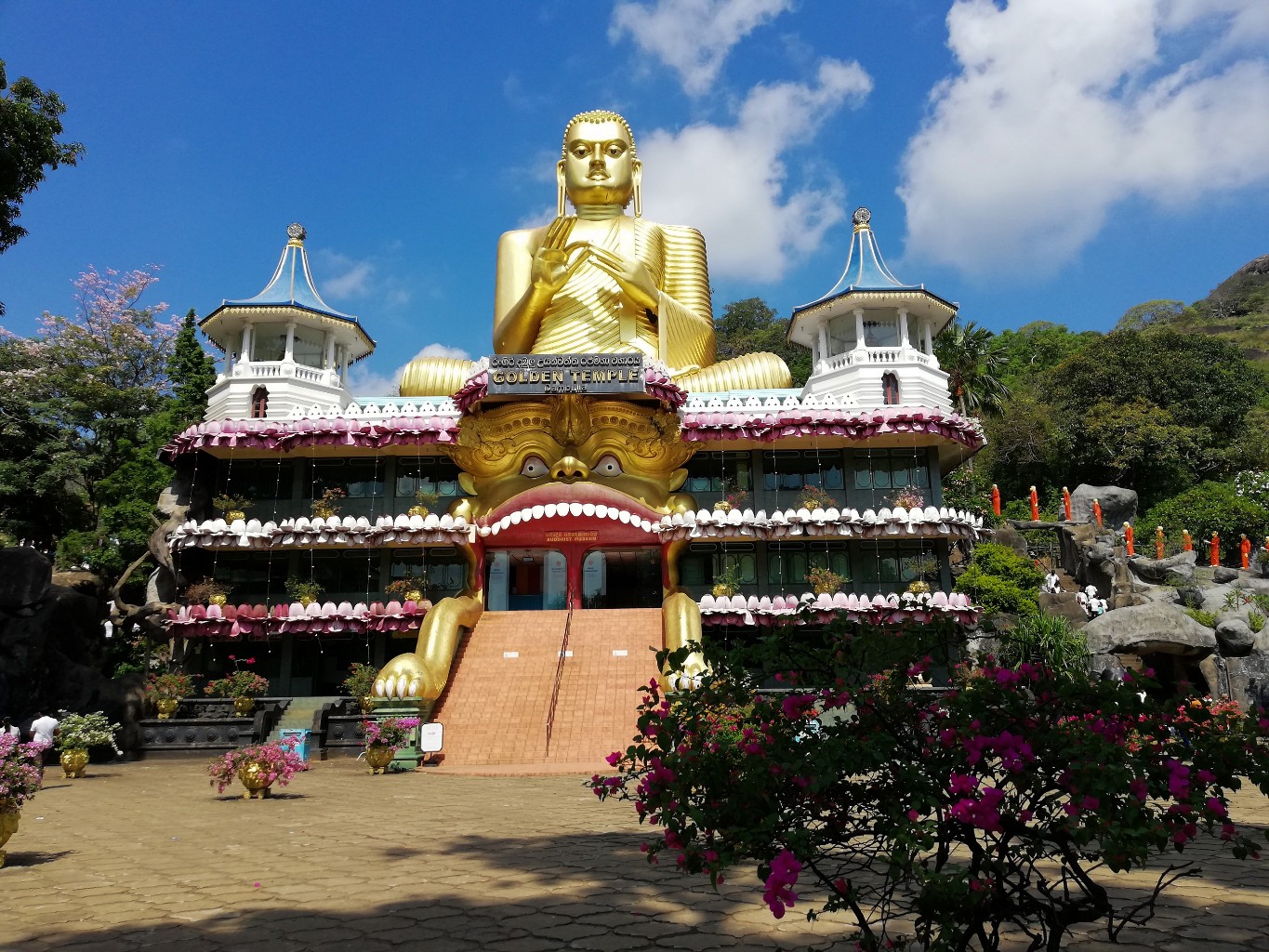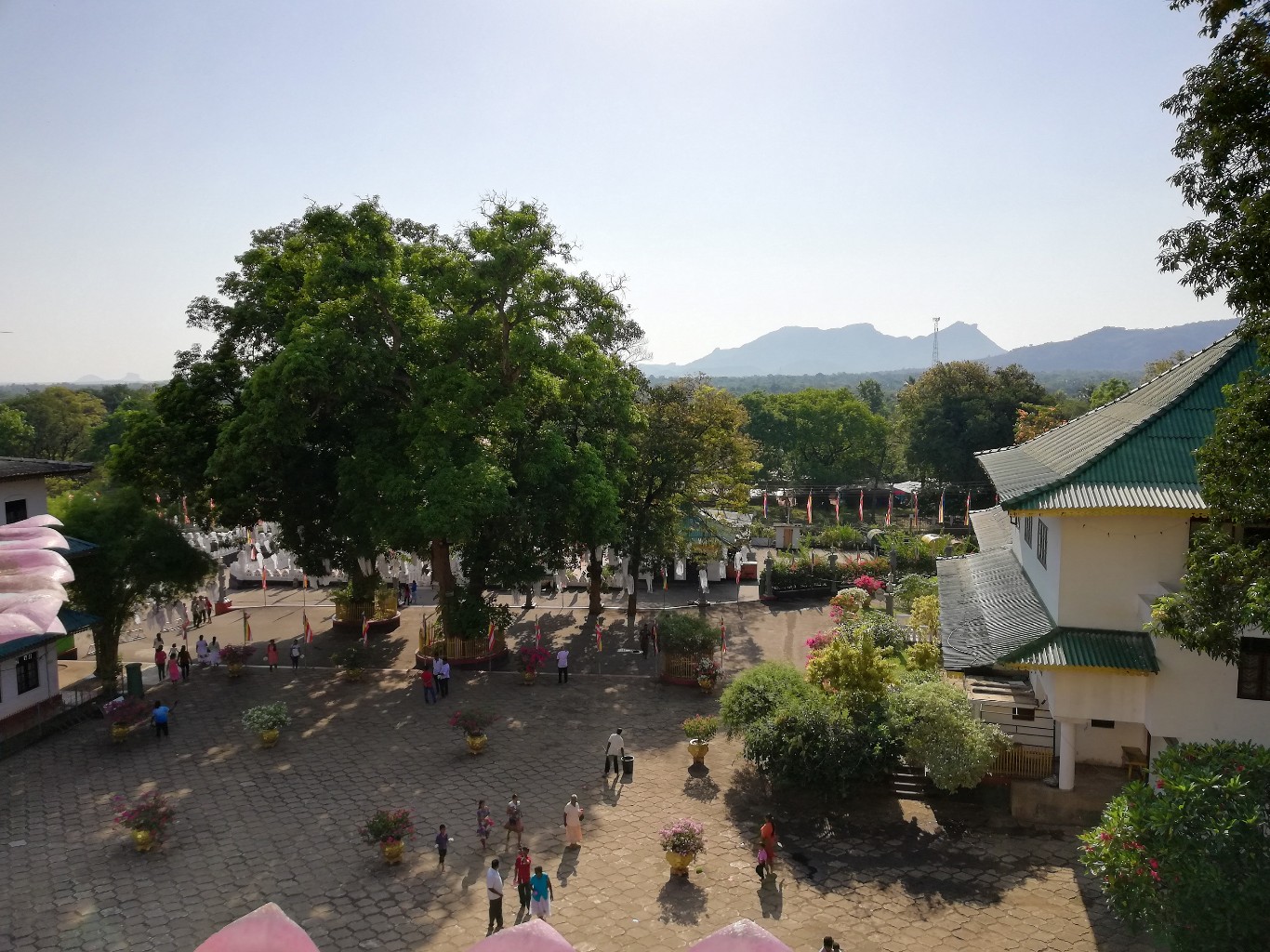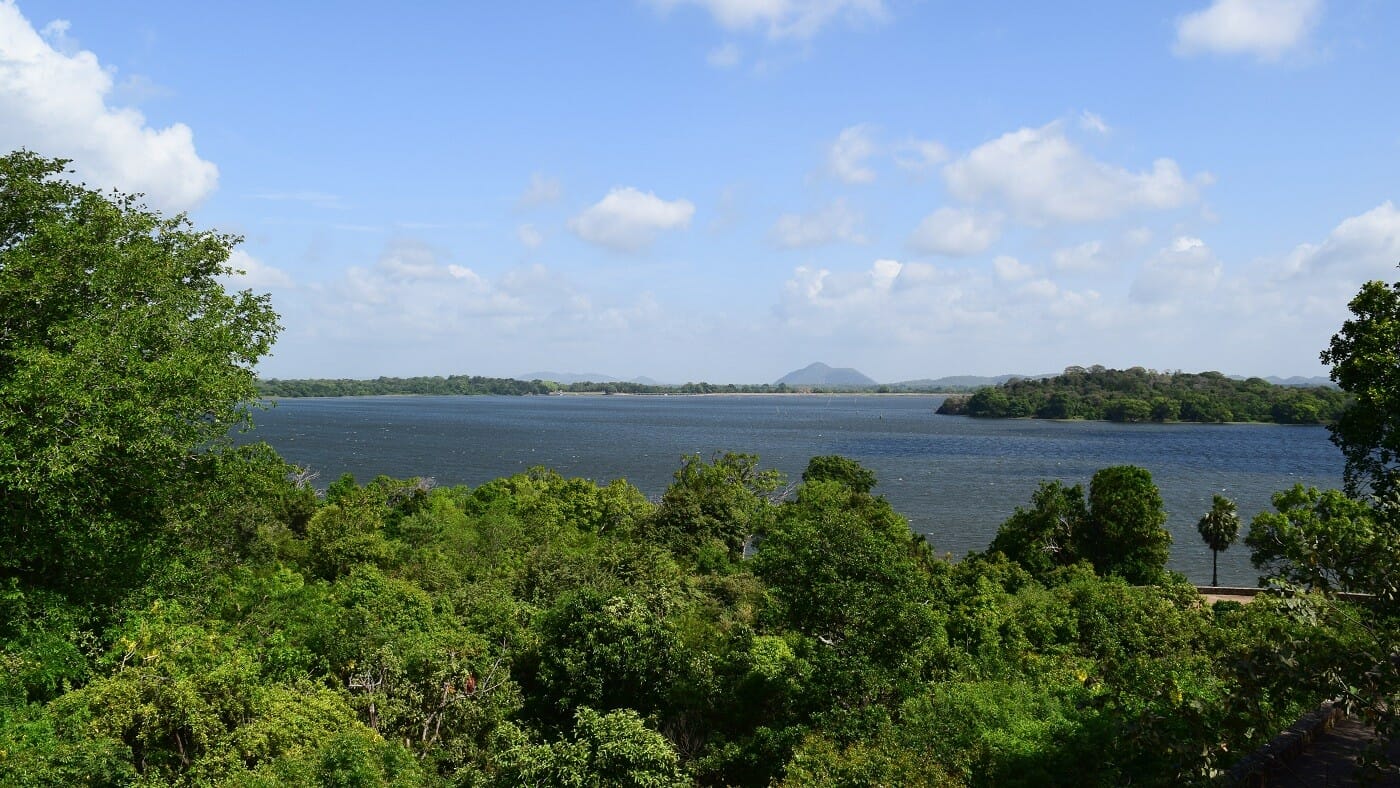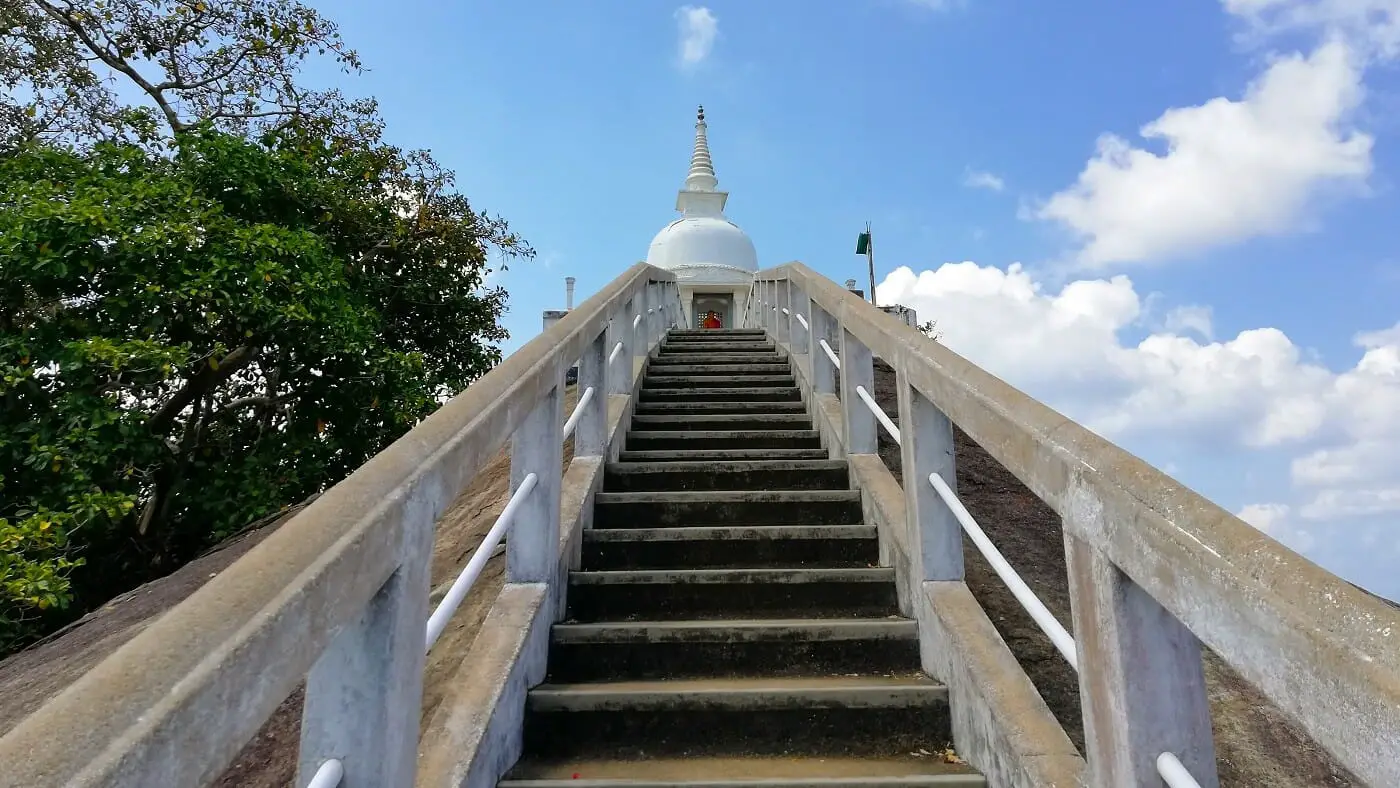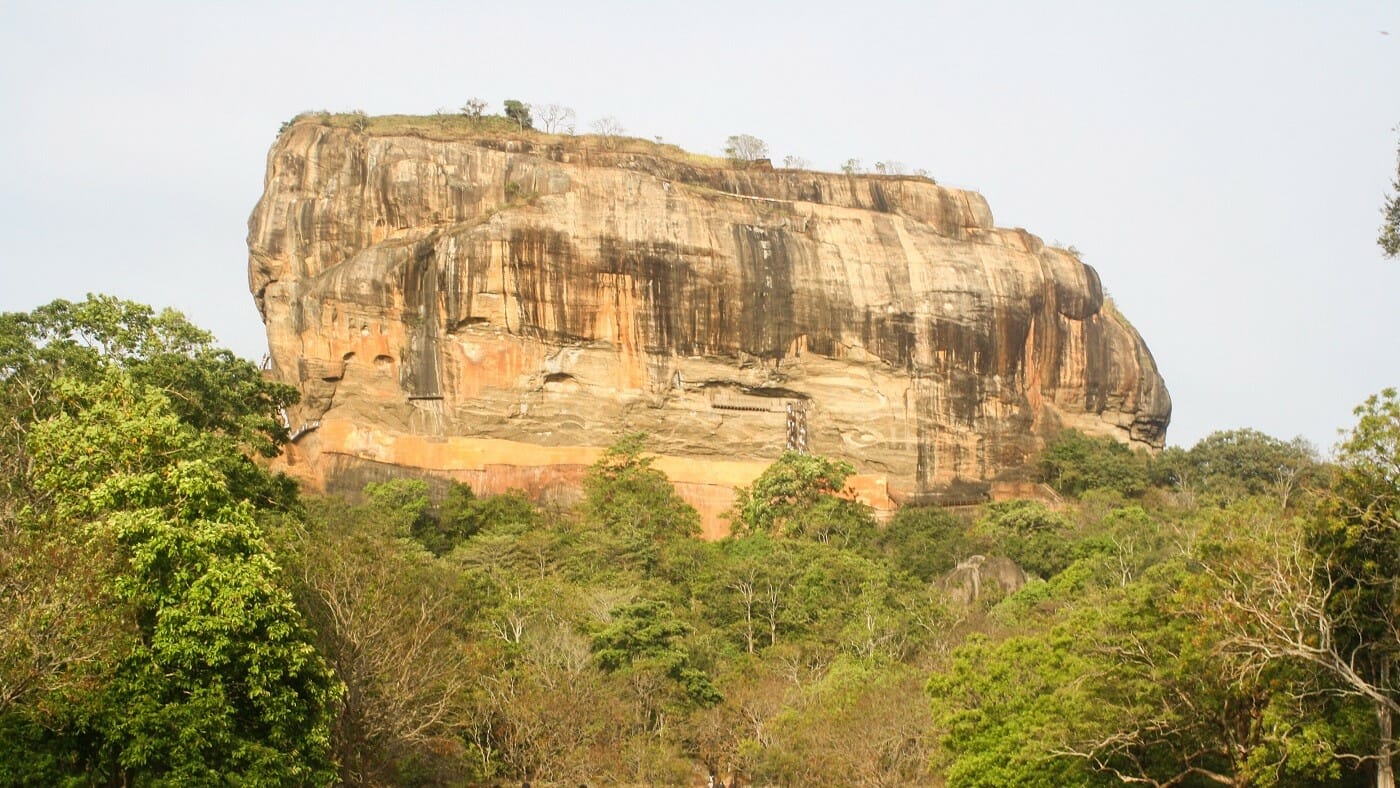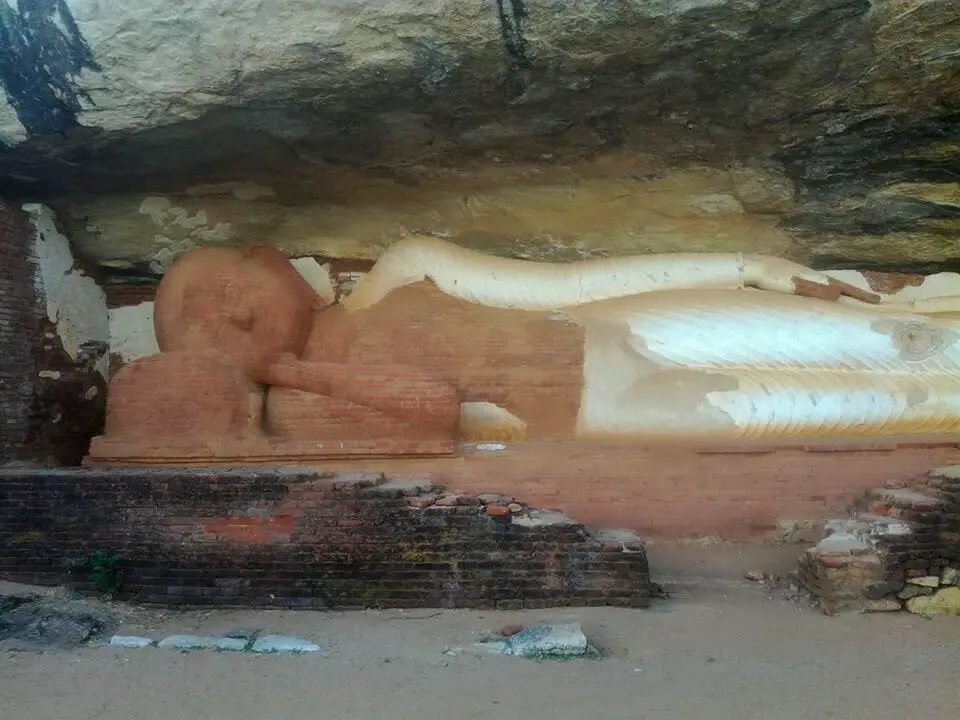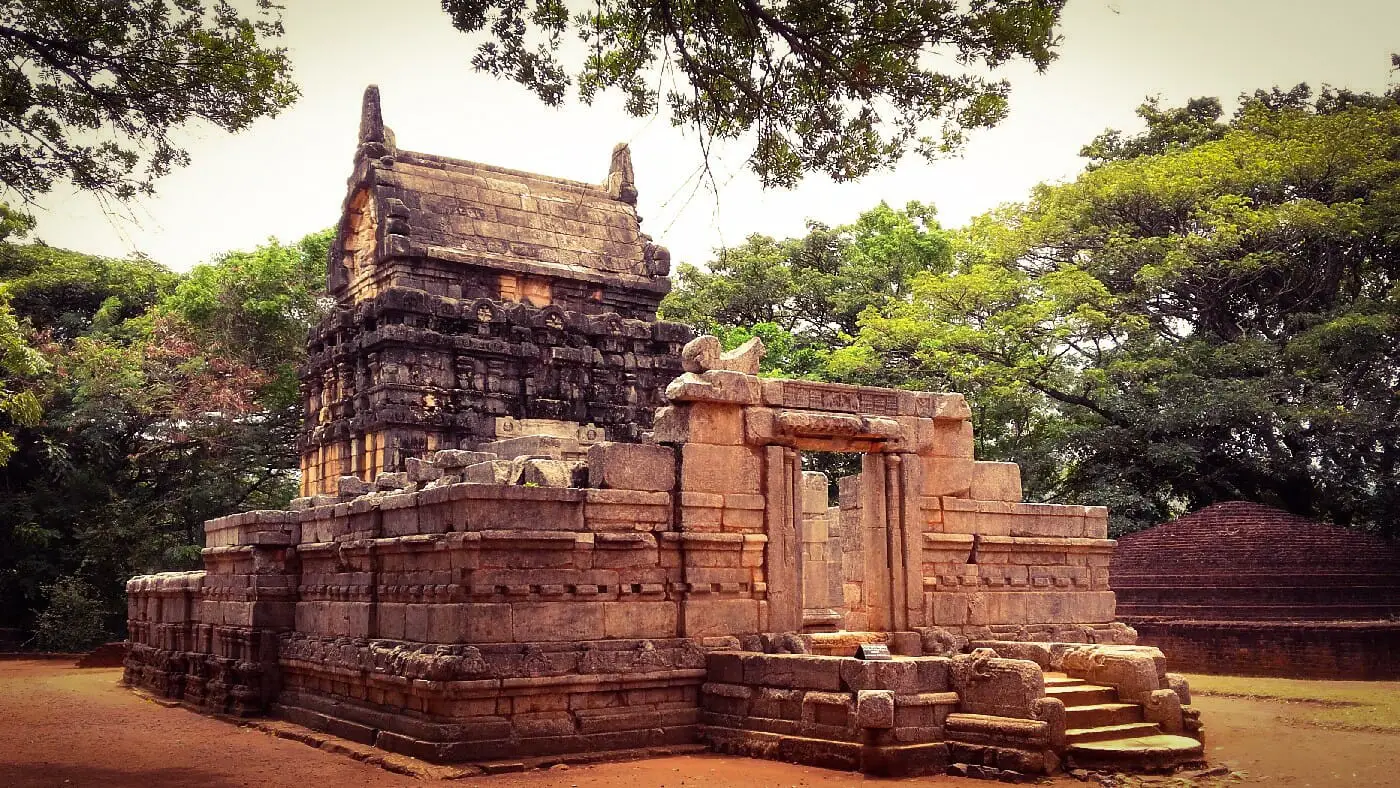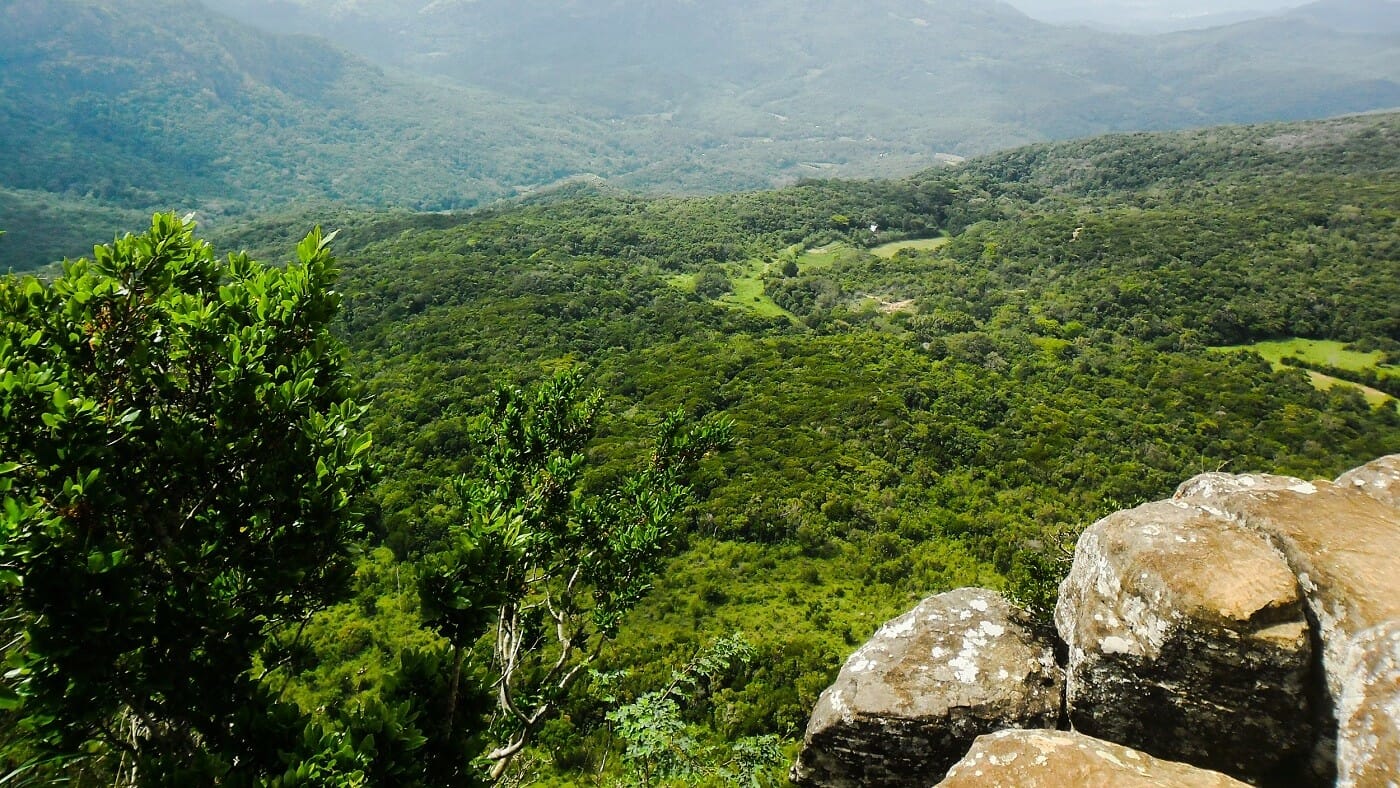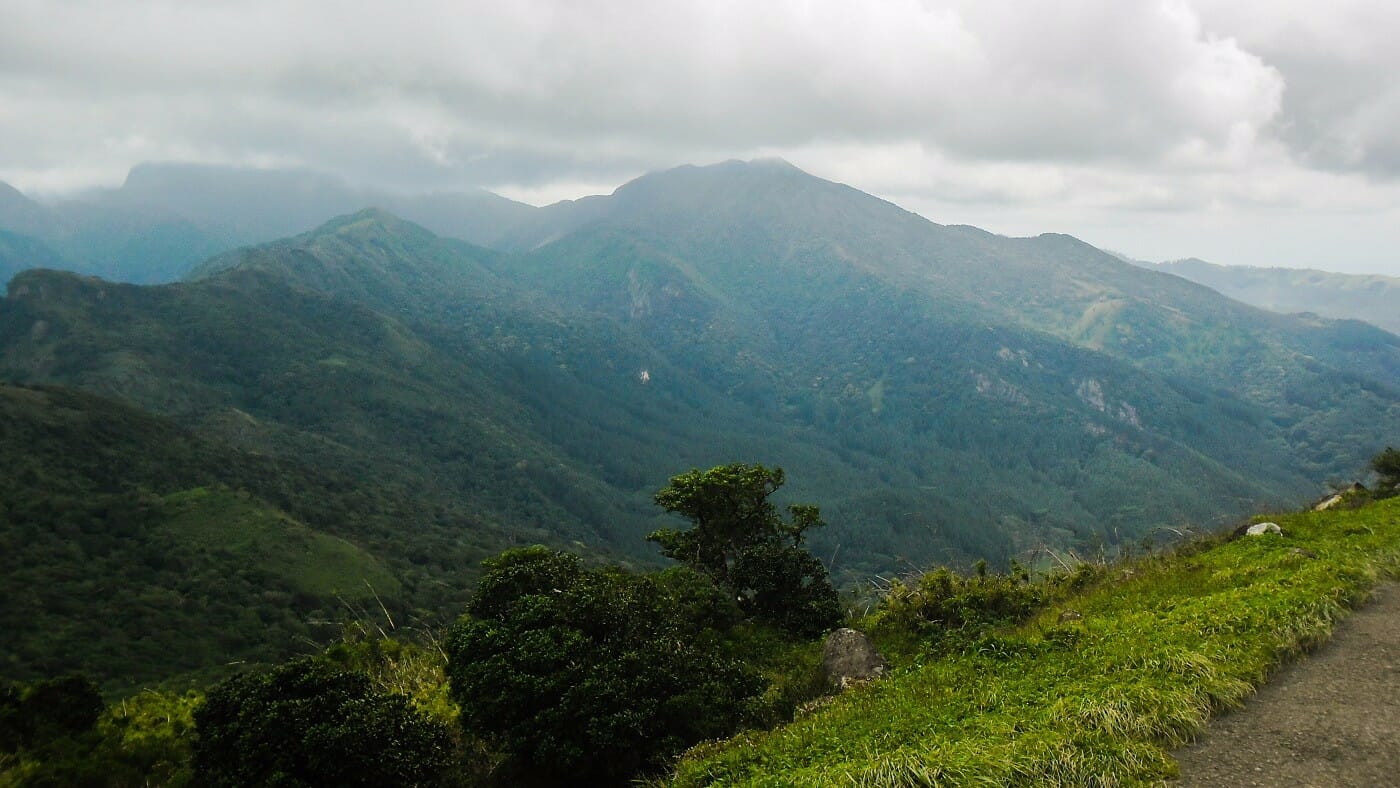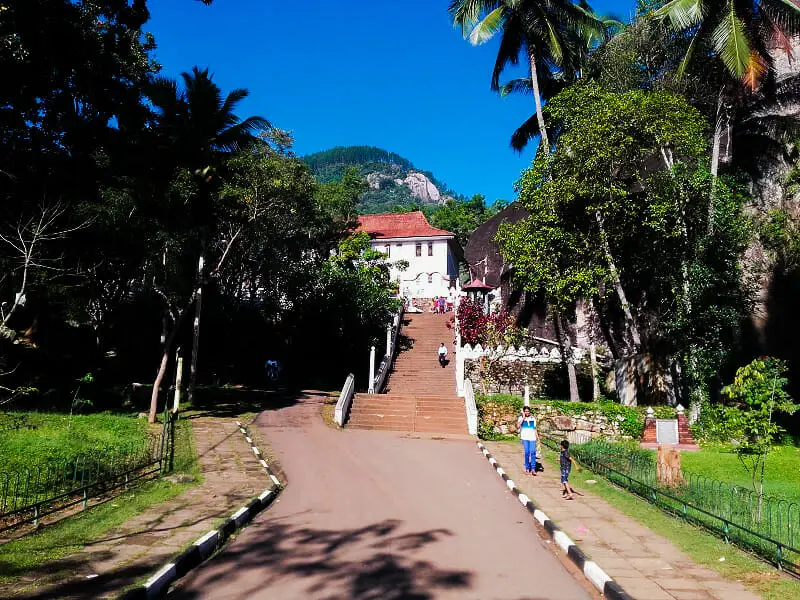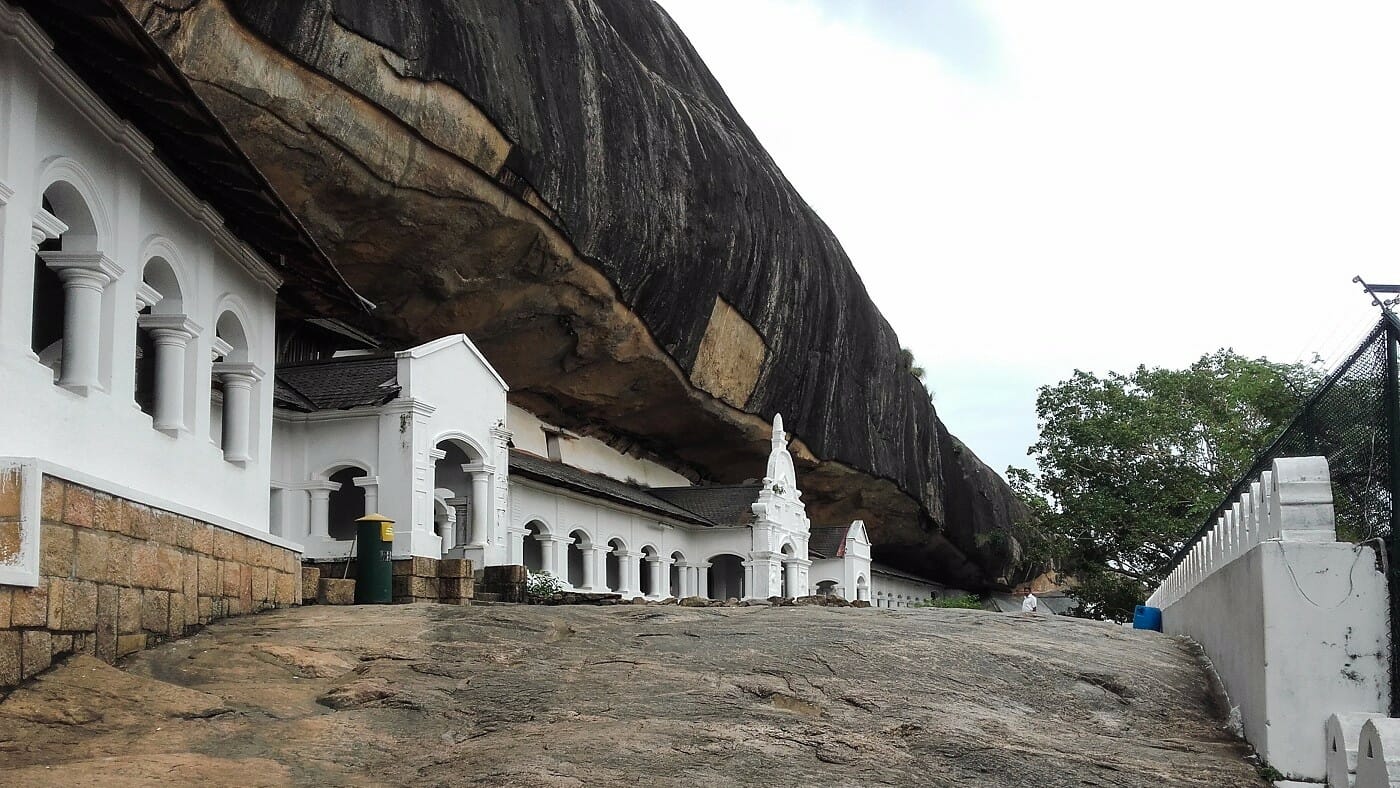
Dambulla Cave Temple or the Golden Temple of Dambulla can be considered as the best-preserved largest Buddhist art gallery belongs to the Kingdom of Kandy. And it has been a sacred pilgrimage site for 22 centuries. Also, it is the largest cave temple complex in Sri Lanka. According to the legend, these caves were initially developed as a temple by the king Walagamba (in 1st century BCE). The temple is located in Matale District of Central Province. It can be reached by Kandy-Jaffna road ( better known as A9 road). If you are coming from the Colombo side it can be easily accessed by Ambepussa-Kurunegala-Trincomalee Road (Use map option on this page to get direction from your current location).
Among the number of caves, there are five caves that contain most of the attractions. King Nissanka Malla (1187–1196) has gilded these caves and added about 70 Buddha statues in 1190. As a result, the temple also titled as Golden Temple of Dambulla.
There are 157 ancient Buddha statues and other statues in these caves. The caves have been renovated by Kandyan Kings in the 18th century. Currently, the caves are decorated with paintings. The paintings in these caves belong to the Kandyan era, the style of painting proves that. The paintings cover an area of around 2,100 m2
Because of the significances of the temple, UNESCO has recognized it as a World Heritage Site in 1991.
Sorry, no records were found. Please adjust your search criteria and try again.
Sorry, unable to load the Maps API.
Share this:
- Click to share on Twitter (Opens in new window)
- Click to share on Facebook (Opens in new window)
- Click to share on LinkedIn (Opens in new window)
- Click to share on Reddit (Opens in new window)
- Click to share on Tumblr (Opens in new window)
- Click to share on Pinterest (Opens in new window)
- Click to share on WhatsApp (Opens in new window)
- Click to email a link to a friend (Opens in new window)
